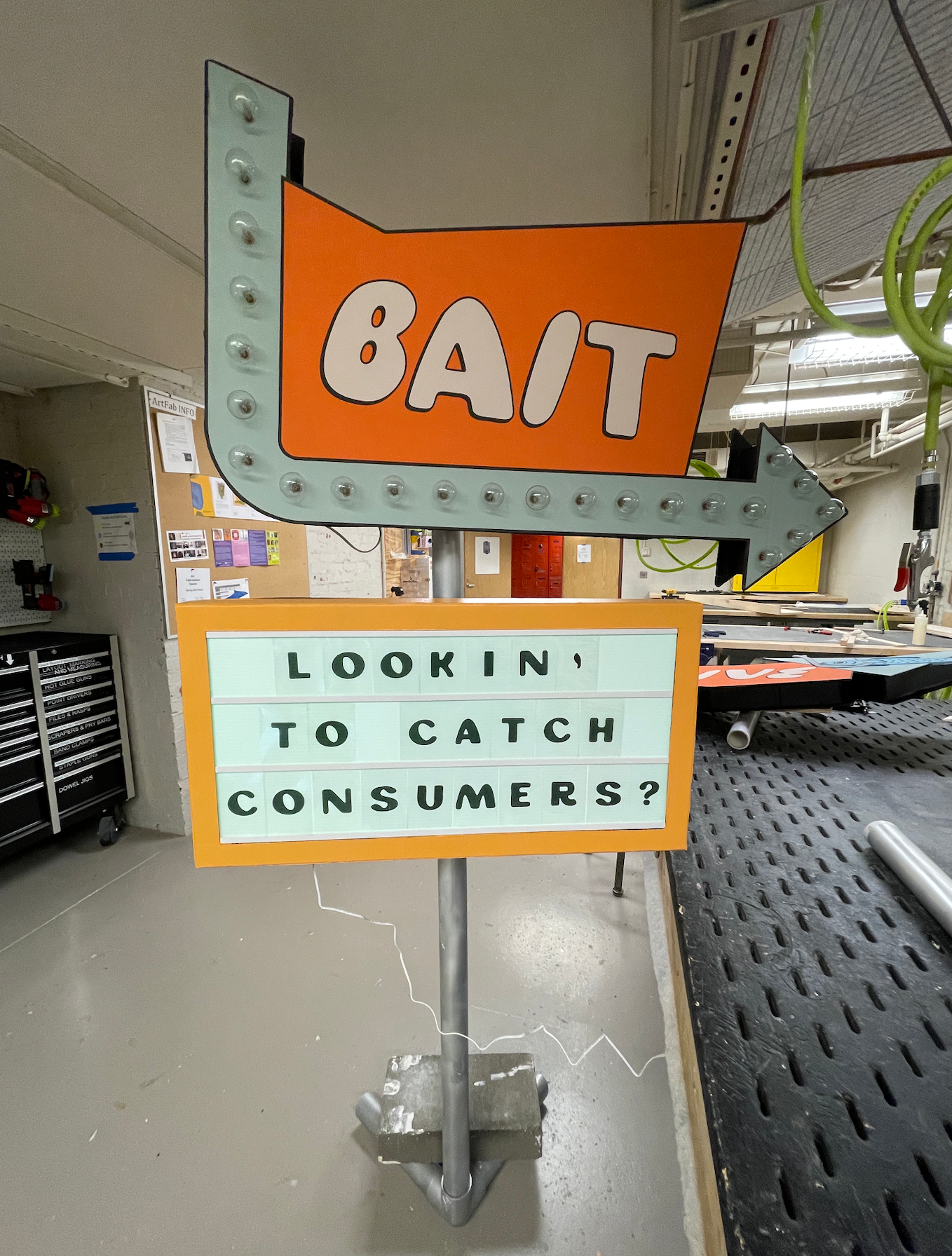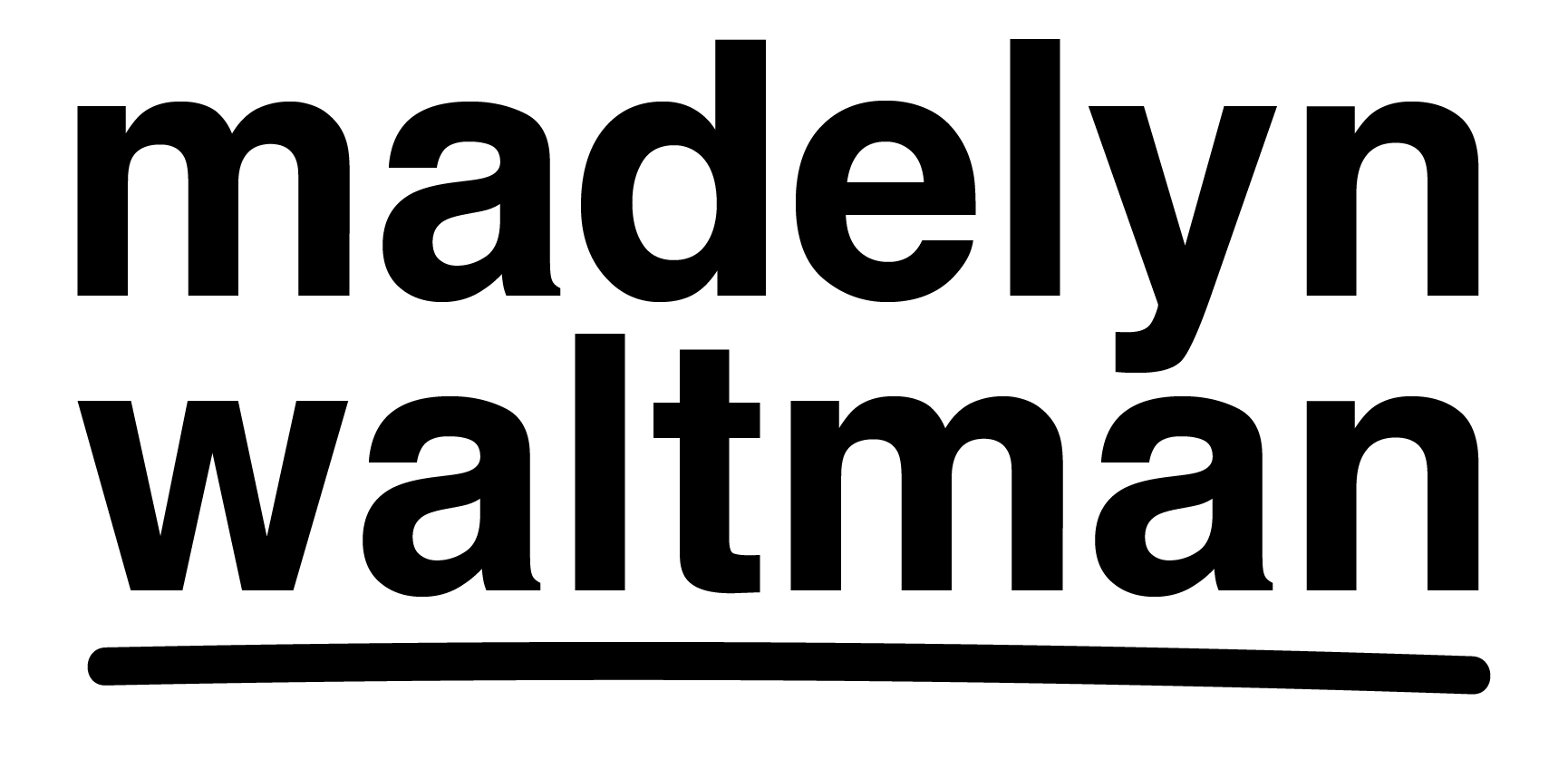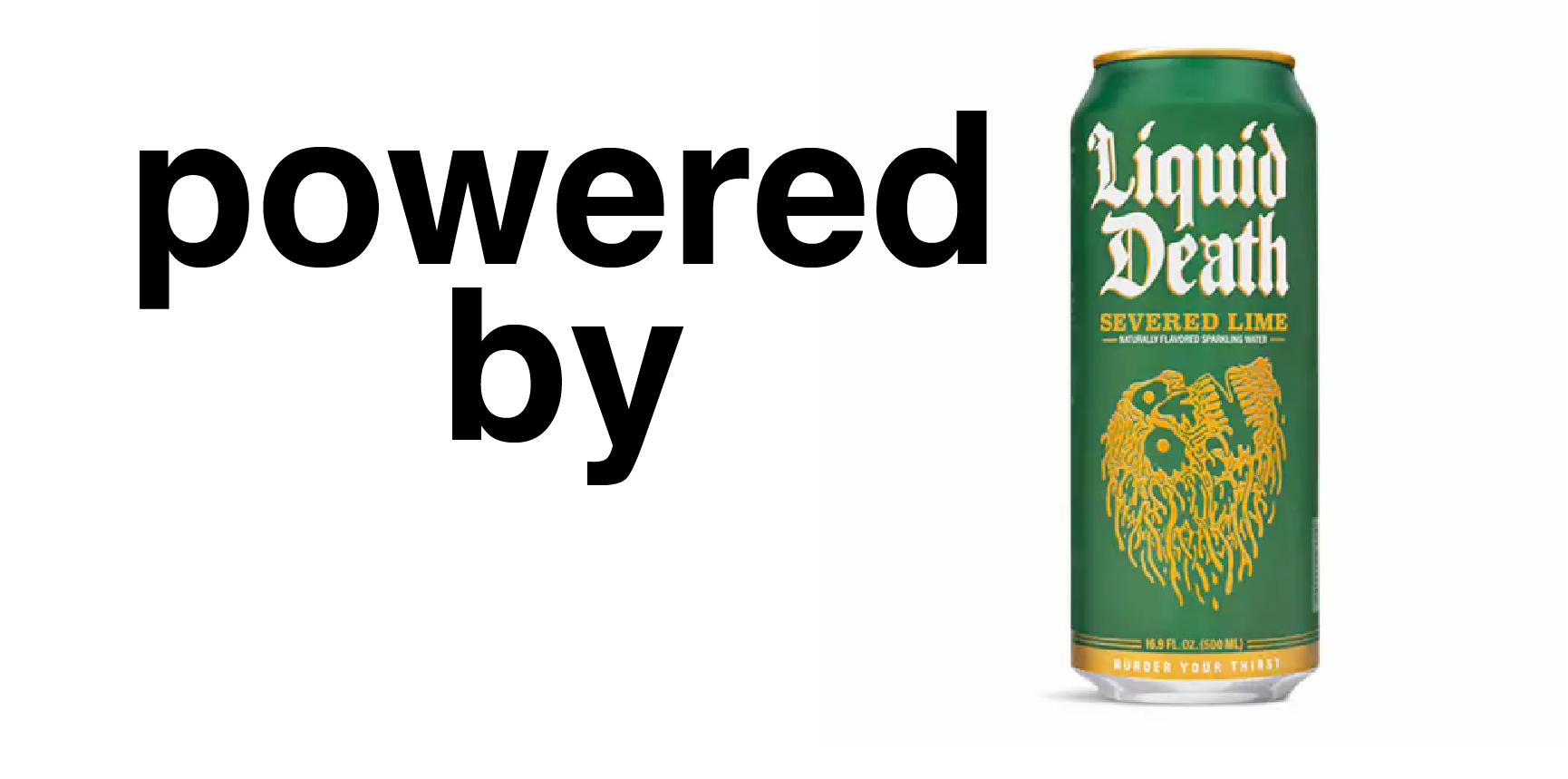LIVE BAIT:
The growing expectations of Graphic Designers
in the workplace as the ones responsible for
getting consumers "on the hook".
in the workplace as the ones responsible for
getting consumers "on the hook".
The Live Bait exhibit provides a contemporary take on the traditional bait shop, serving as an exploration of the evolving demands placed on graphic designers in the professional arena. This exhibit was designed and developed over the course of five months as my capstone project for the graphic design program at the University of Nebraska-Lincoln.
This exhibit aims to spotlight prevalent skills often sought after in graphic design job listings as technology evolves at a quicker rate. Additionally, It offers a user-friendly approach to introducing designers to key abilities essential for launching their careers. In the creative industry, designers are expected, both explicitly and implicitly, to serve as the driving force behind attracting consumers to a company or agency's offerings. To achieve this, designers must infuse their work with a dynamic, lively feel, creating opportunities for consumers to form connections with the product and brand, solidifying their role as "live bait". By showcasing the multifaceted demands placed on designers in the current and upcoming professional landscape, Live Bait encourages aspiring graphic designers to cultivate these skills in order to excel in the industry so they don’t become the fish out of water.
Full Exhibit Photos
click to enlarge


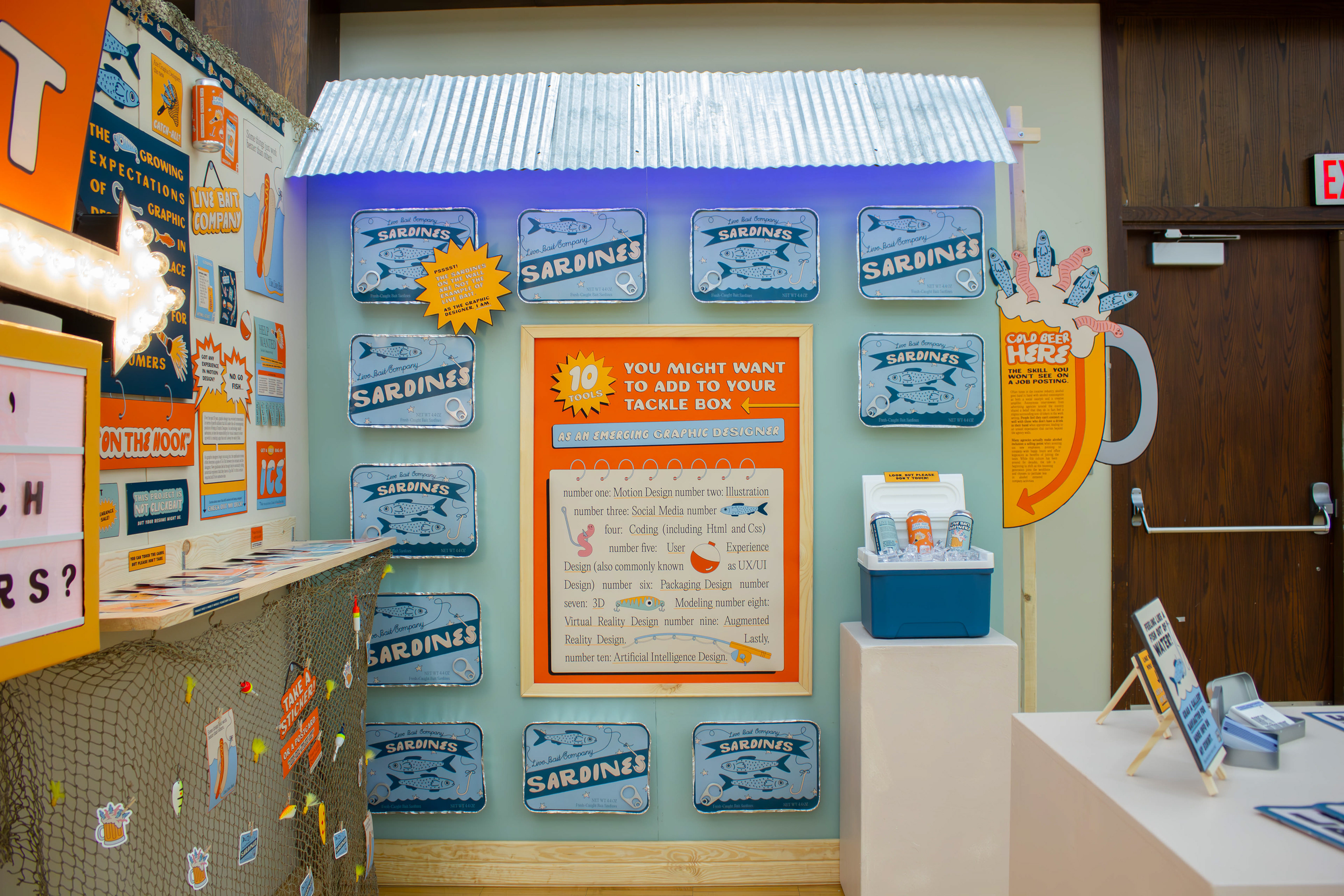
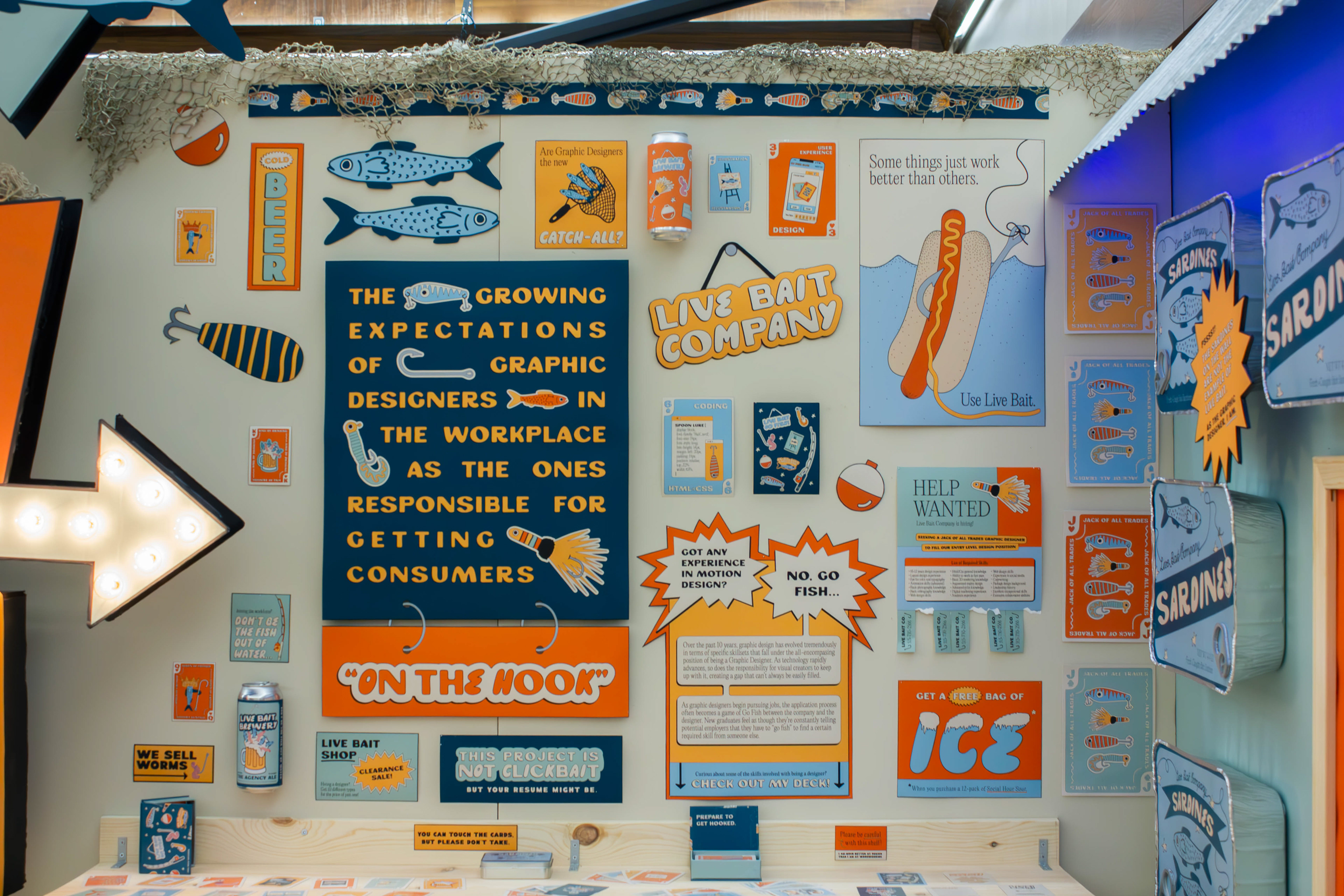
Gallery Navigator Zine
At first glance, I figured this exhibit could be overwhelming to viewers, designers and non-designers alike. To provide appropriate context for all aspects of my exhibit, I created a 16-page gallery navigator for viewers to look through during their time at my exhibit. The navigator sheds light on the purpose behind the project theme, as well as the supporting elements associated with it.
Each element is summarized in a few paragraphs using half of the spread space, while the other half highlights the main ideas of what each page and its corresponding element offer. This design allows for a customizable experience for the viewer, encouraging them to engage with the exhibit at their preferred level of interest.
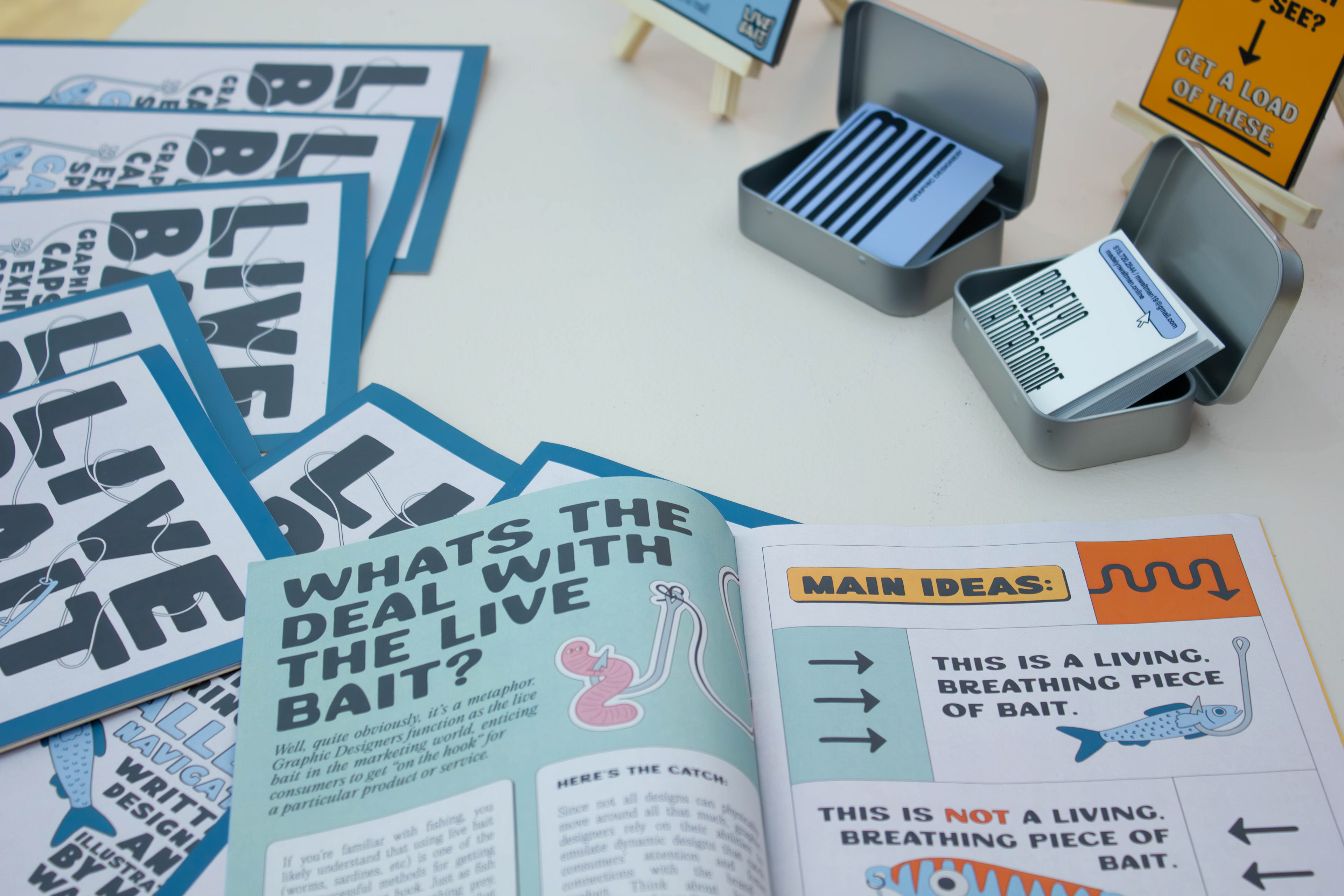

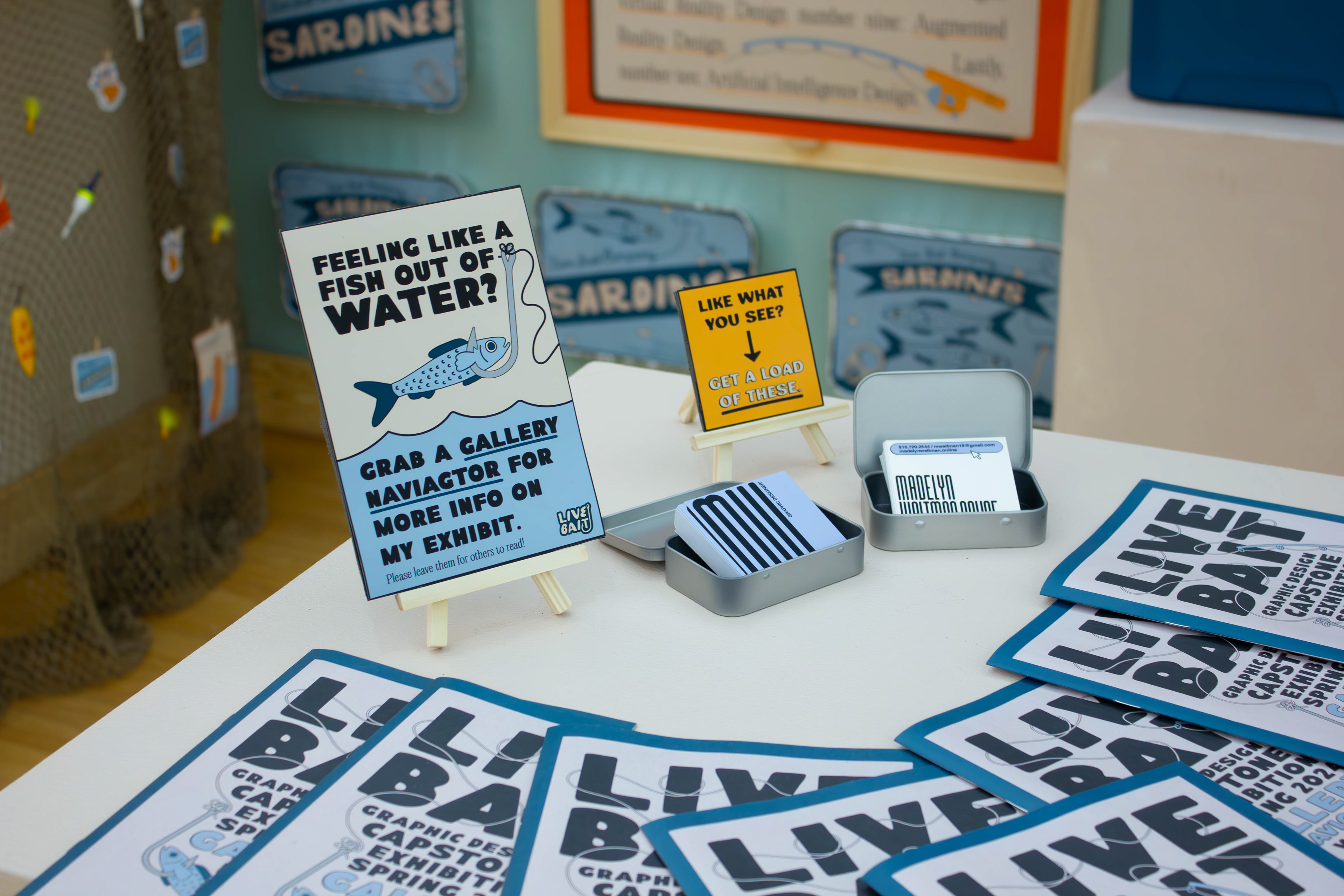
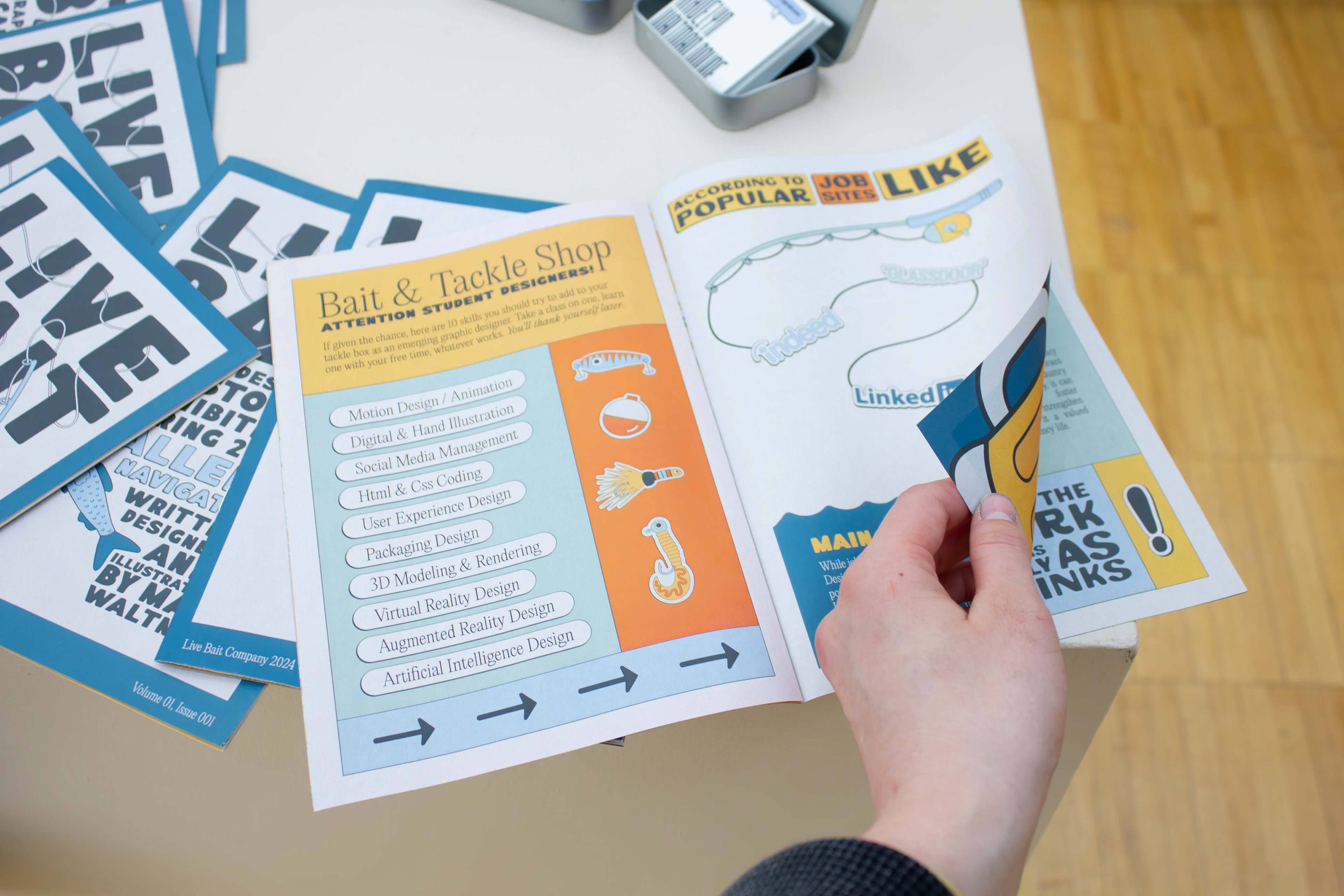
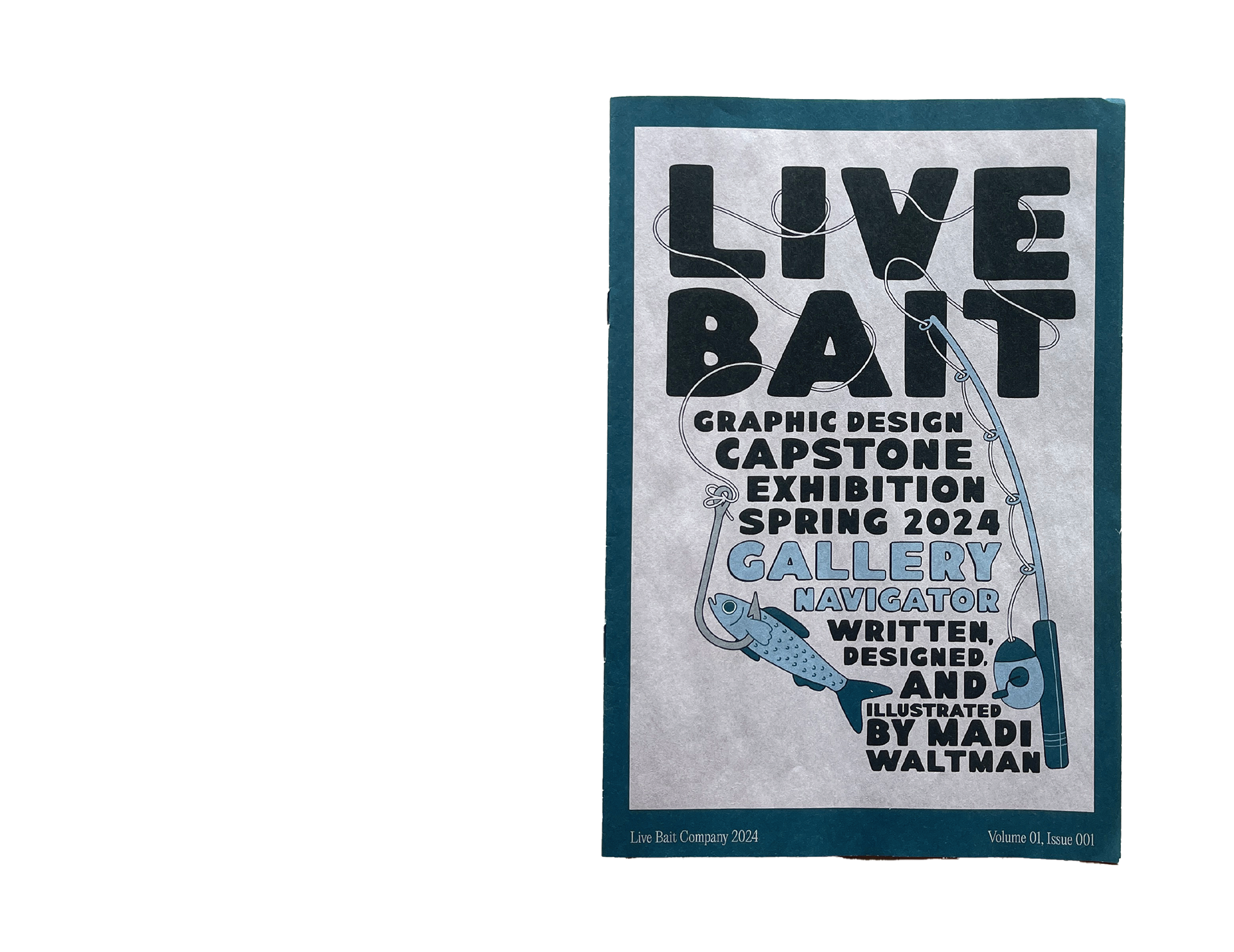
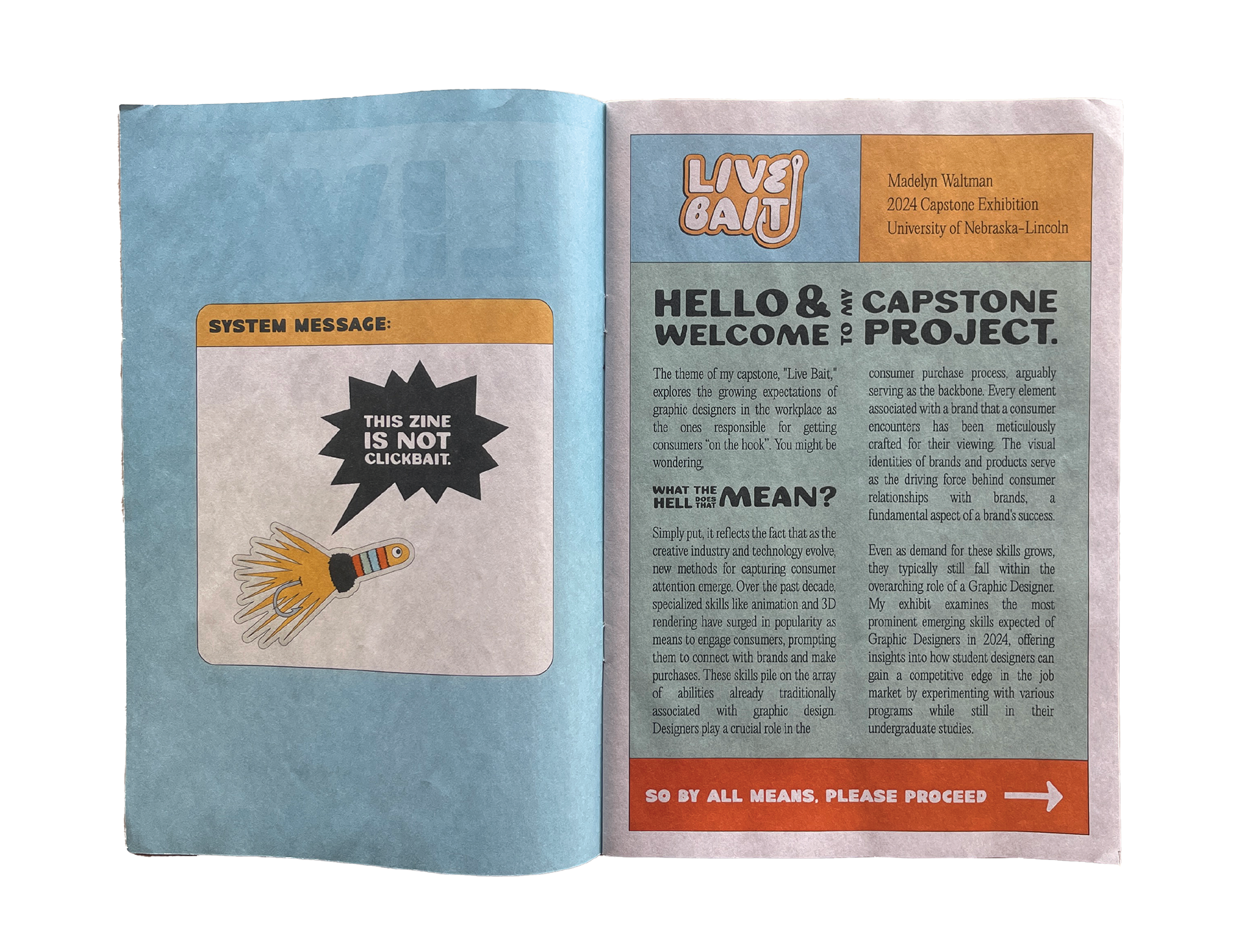

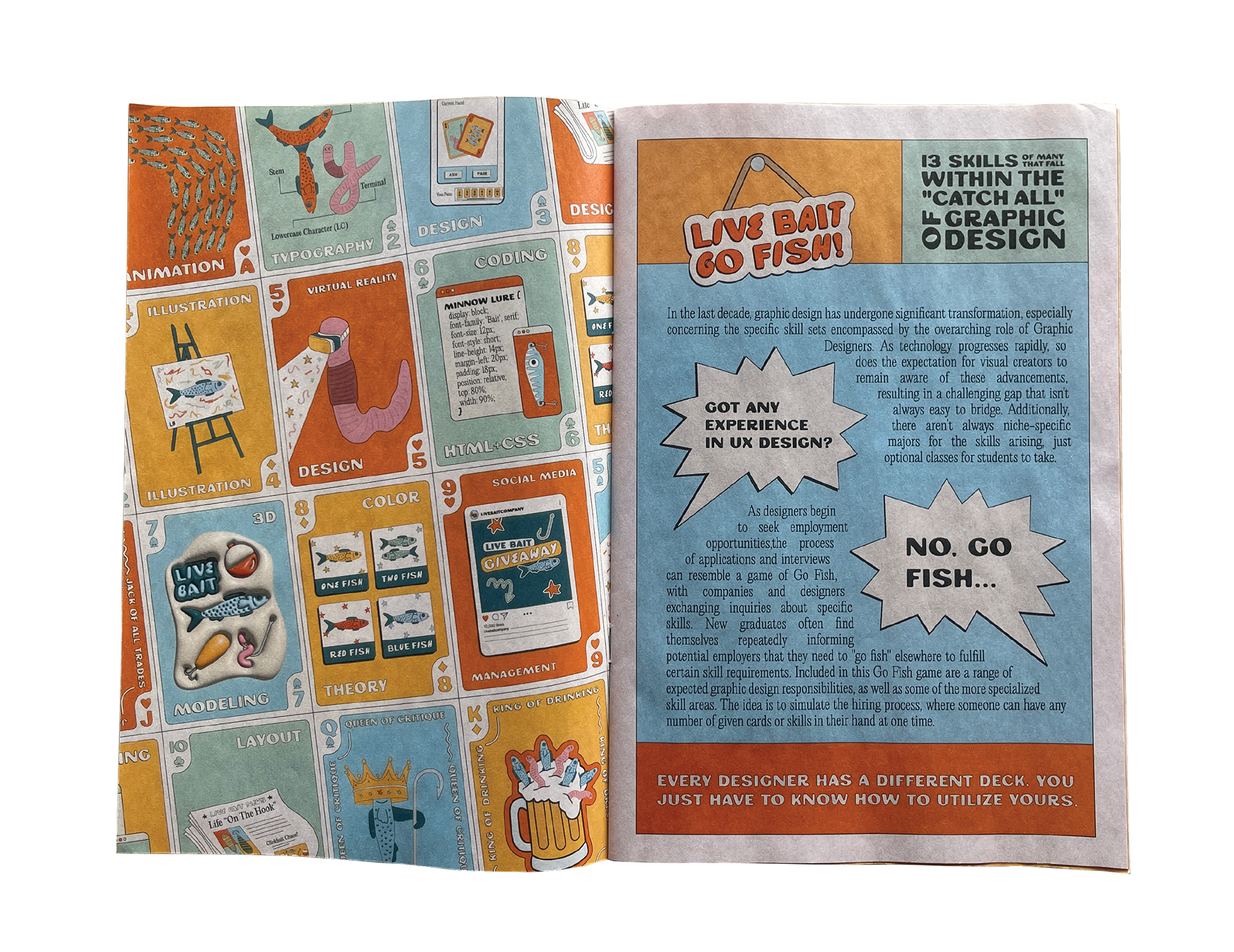




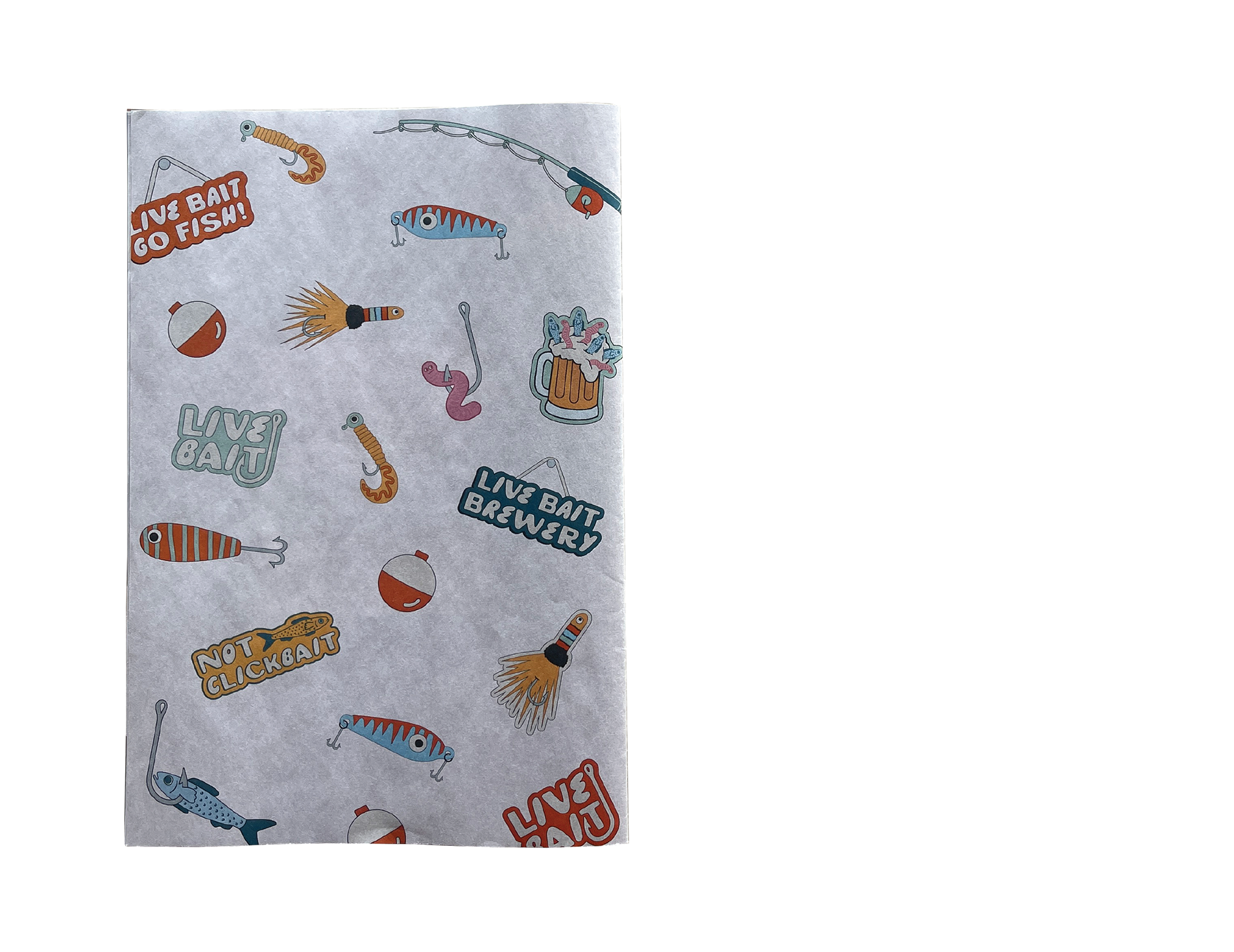
Live Bait Go Fish: The Go Fish Game for Graphic Designers
When looking for internships and jobs throughout my college career, one thing I noticed right away was how much the job search process resembled a game of go fish; I felt like I was always being asked, "Do you have any experience in this specific skill?" and I would have to tell the employer to "go fish" for another person that possessed the array of skills they were looking for. When developing this idea, I realized everyone has their own "hand" of skills to offer, and must capitalize on their abilities in order to find a job that is looking for what they have.
The fully designed, 52-card deck features 13 different relevant graphic design skills, ranging from the bottom-line basics to newly emerging skills surrounding advancing technology in the design realm. Included in the deck are two jokers, an instruction card, a title card, and an about the artist card.
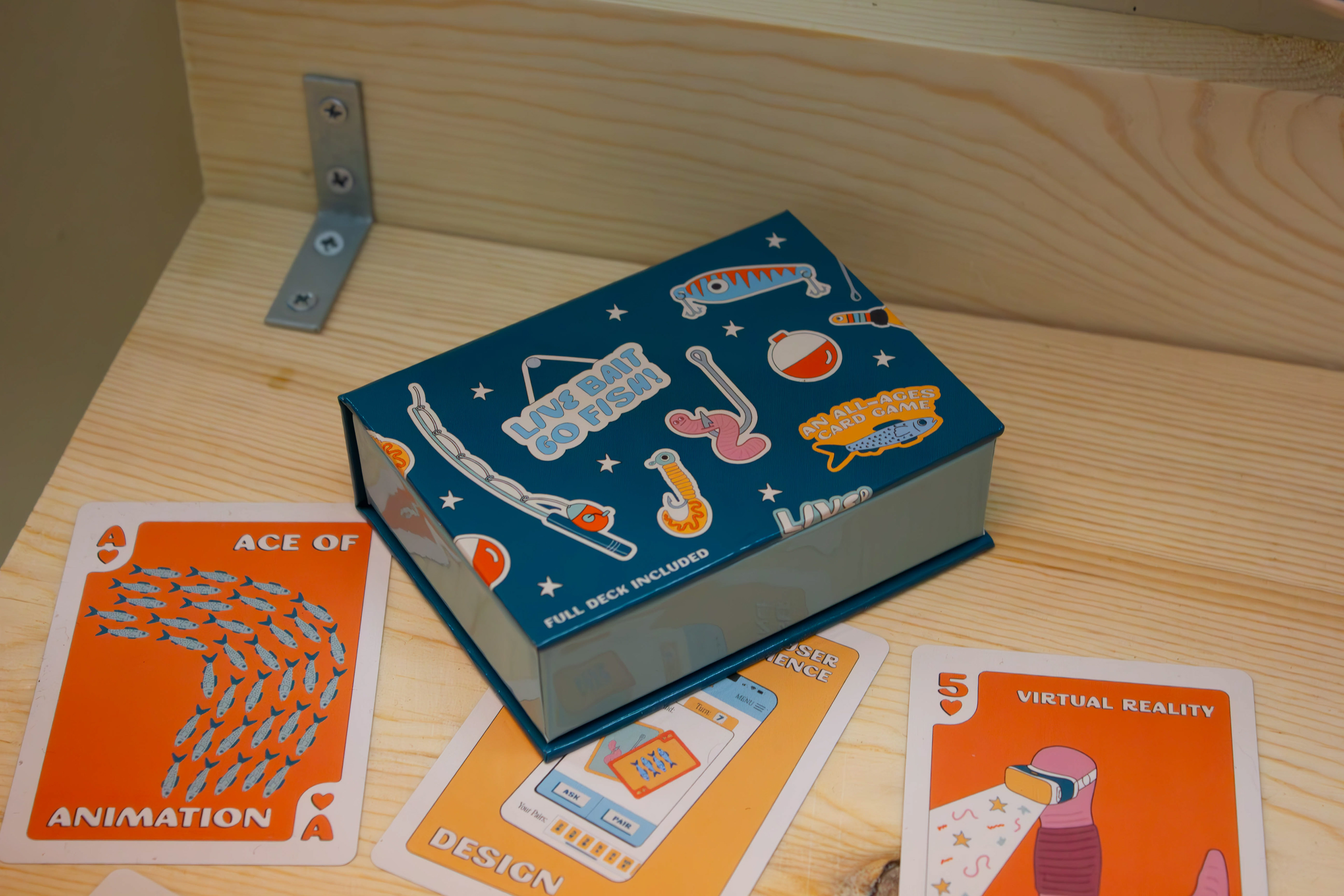
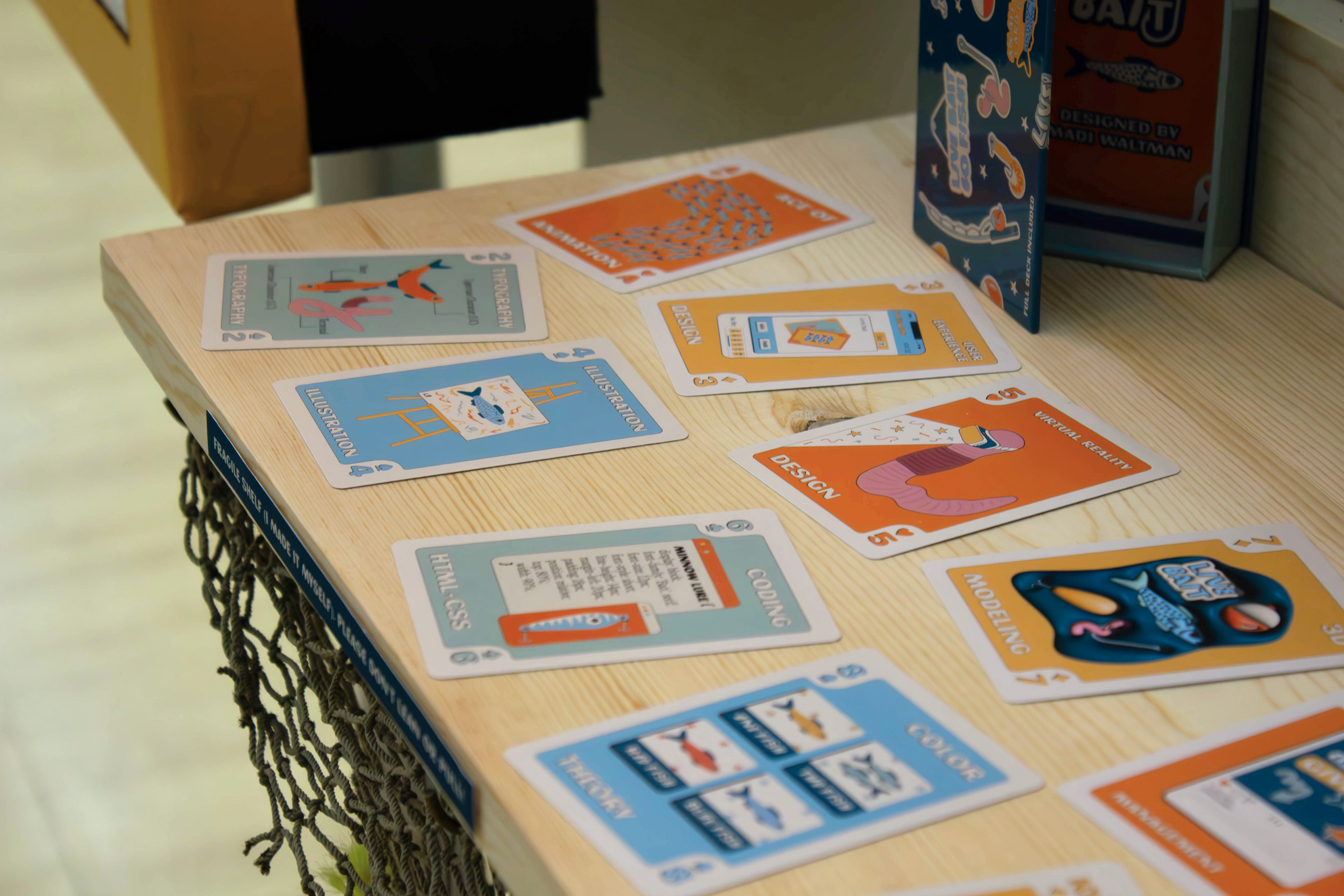

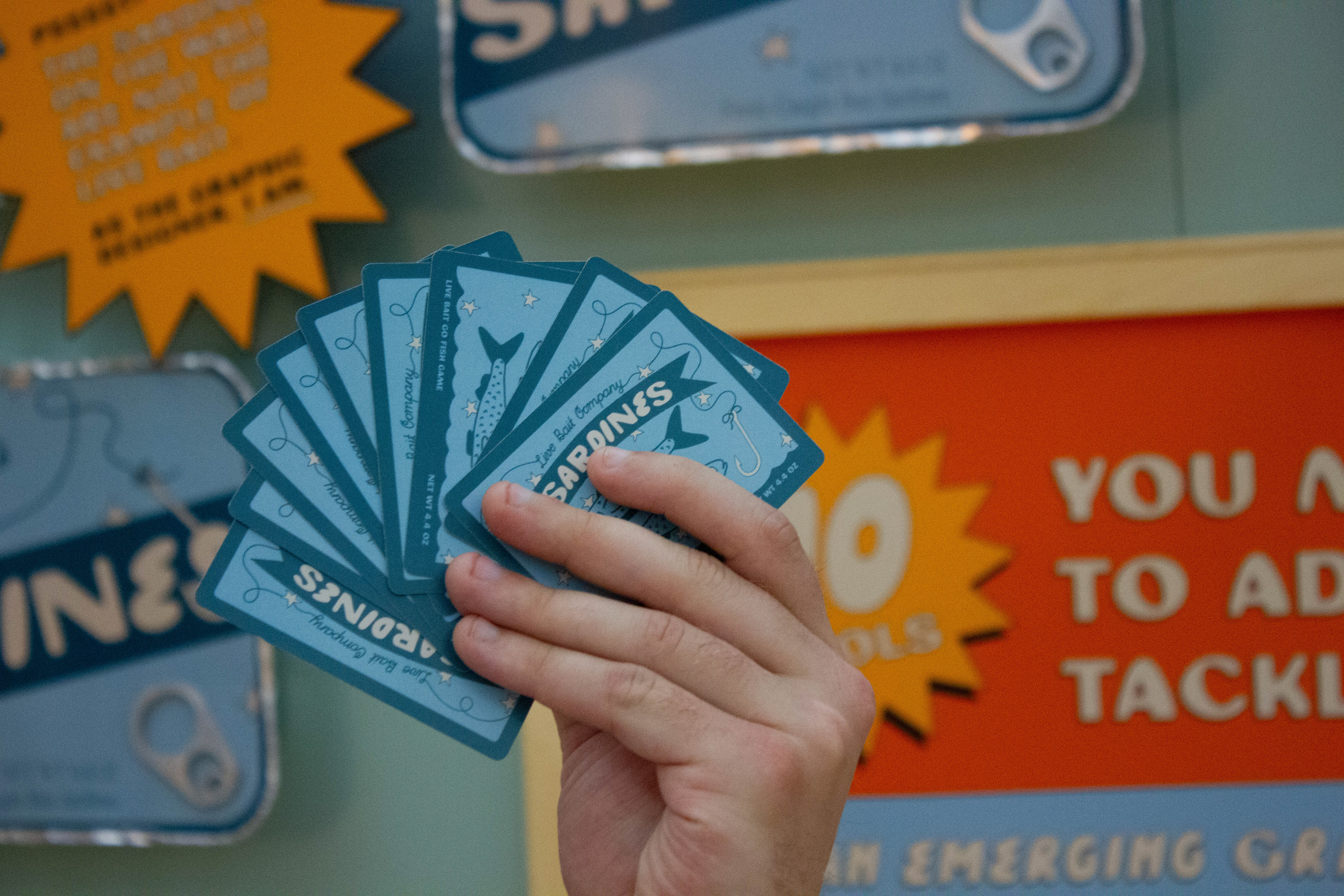
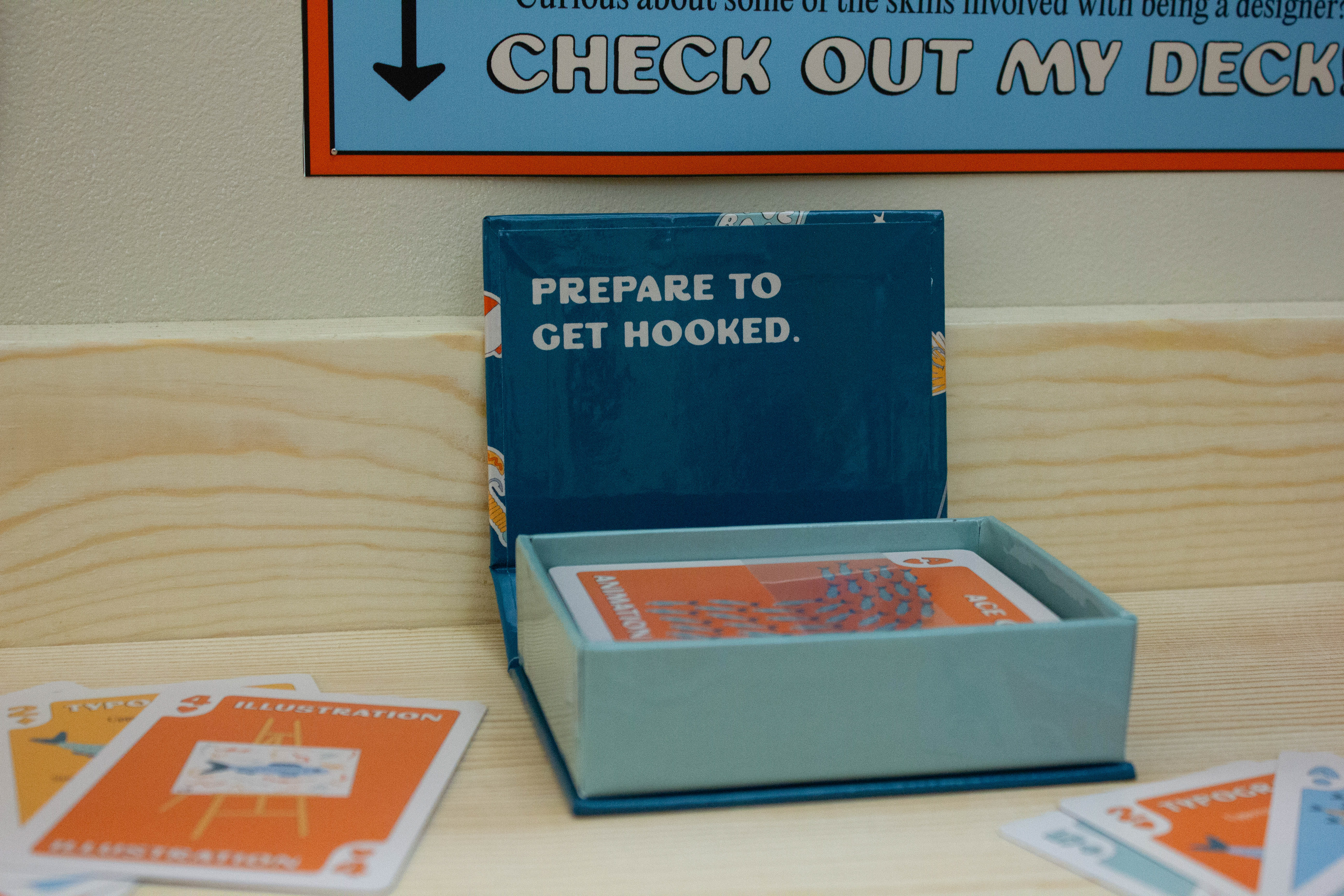
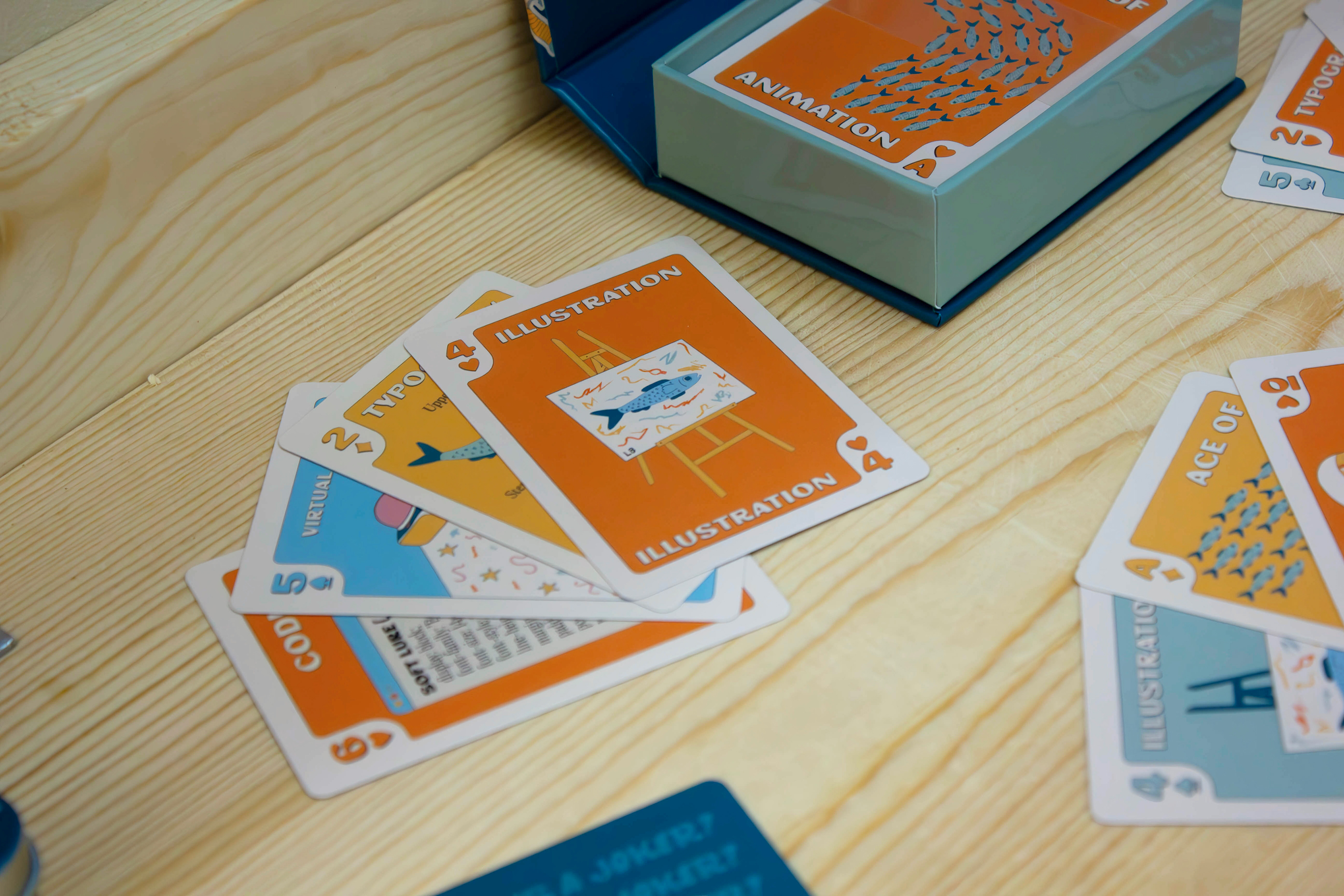
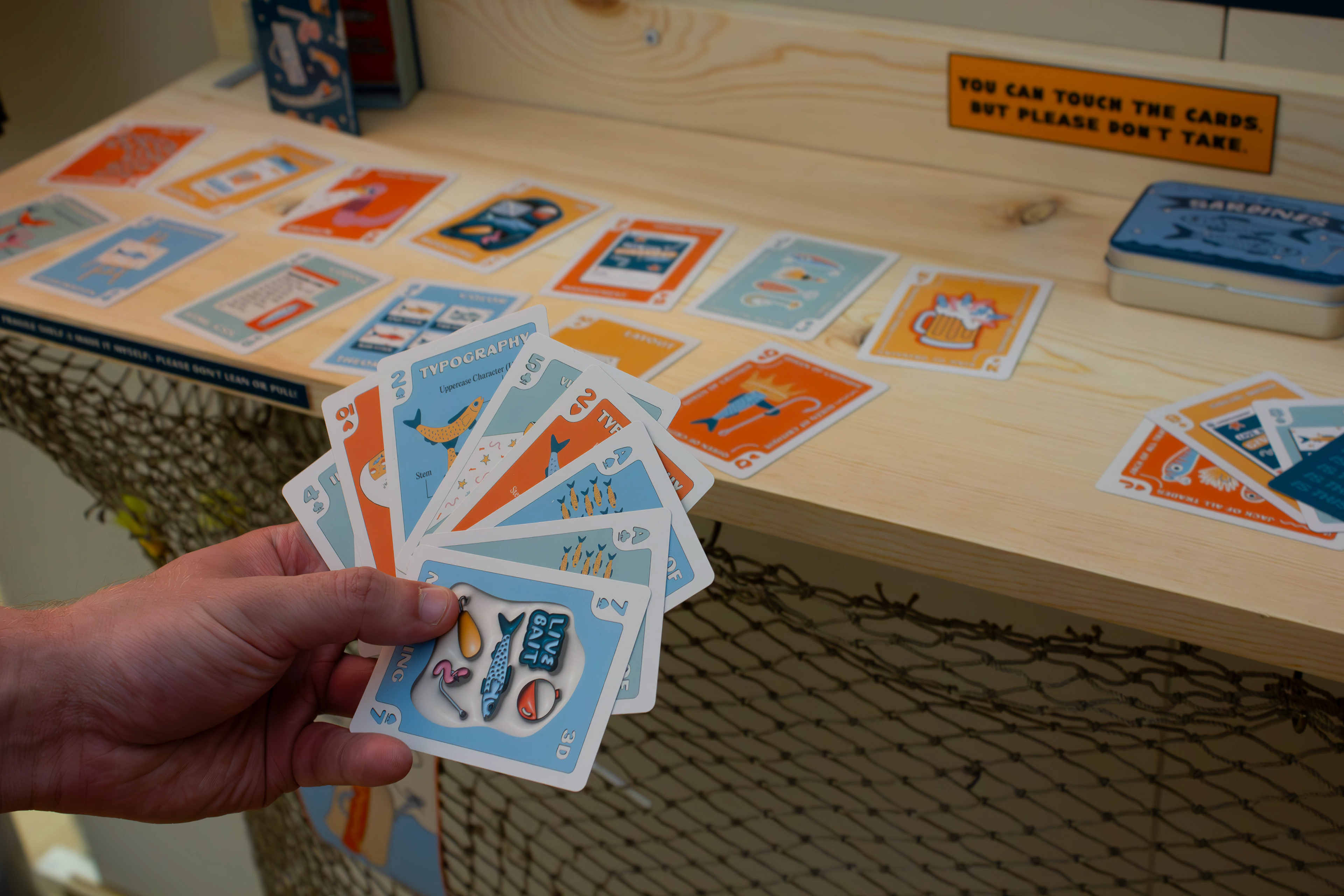

Live Bait Brewery
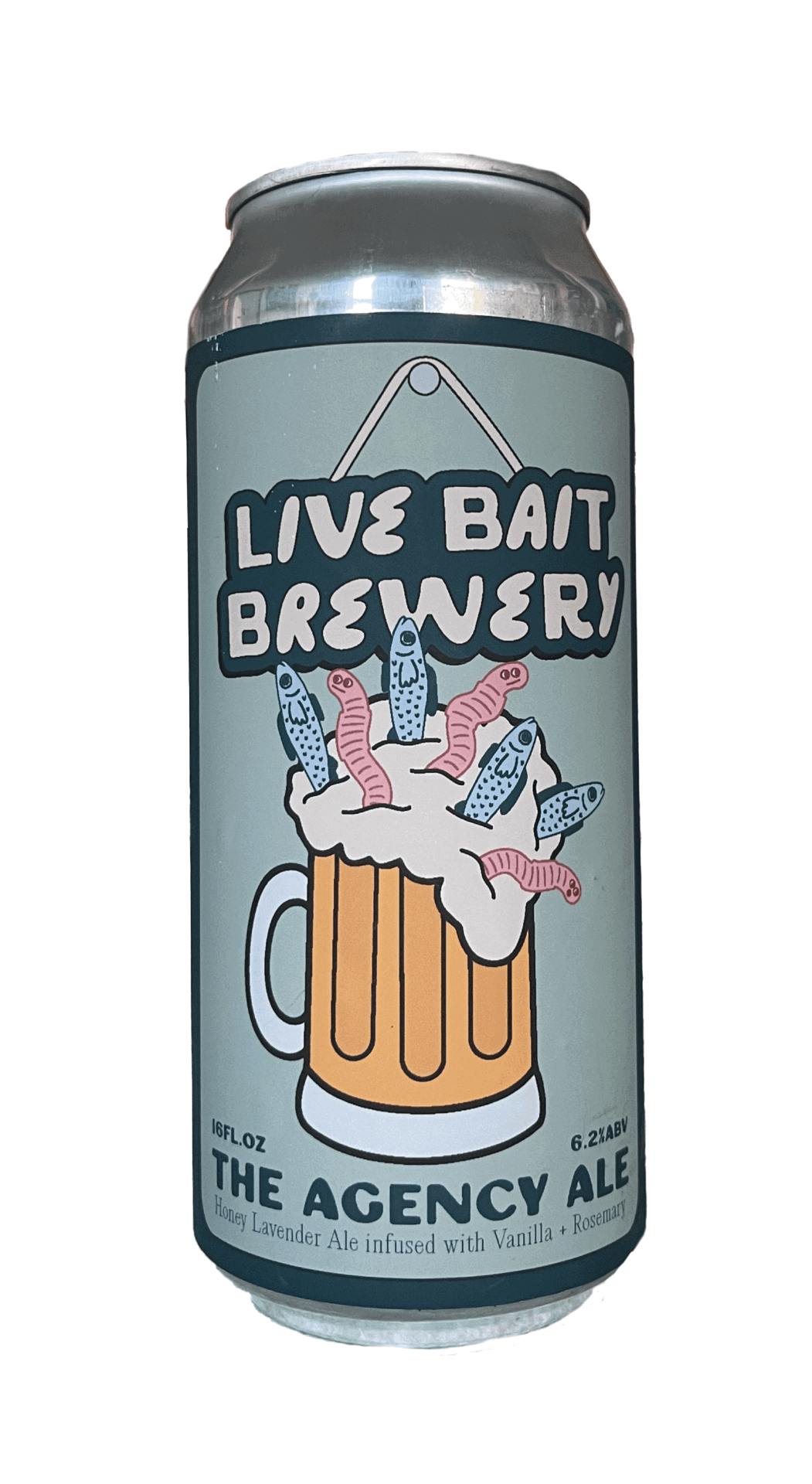
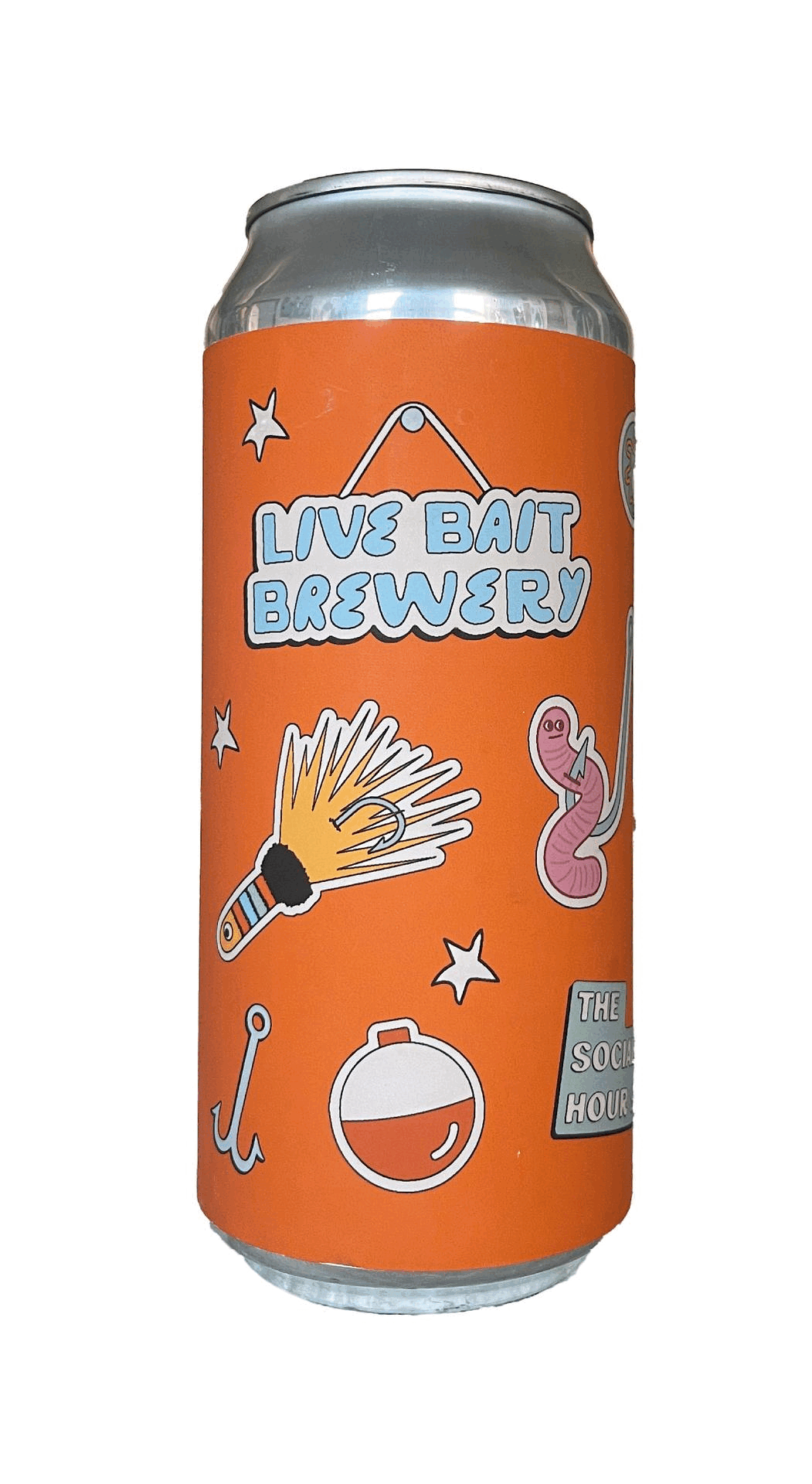
Often in the creative industry, alcohol goes hand in hand with alcohol consumption as both a social catalyst and a creative amplifier. Anonymous interviewees from advertising agencies around the country shared a belief that they feel a stigma surrounding non-drinkers in the work setting. People feel they can’t connect as well with those who don’t have a drink in their hand when appropriate, leading to an unsaid expectation that carries beyond the agency walls. Many agencies make alcohol inclusion a selling point when scouting out new employees, pointing to company-wide happy hours and office kegerators as benefits of joining the team.
This expectation materializes in the form of a microbrewery, featuring two designed can labels that highlight an aspect of career expectations not typically mentioned in job postings. It's important to note that this expectation is inferred from surveyed employees, rather than being directly imposed by the company. This is not a negative observation, but rather an additional way to draw attention to the numerous explicit and implicit skills that creatives and designers may face. This attribute of agency culture can also act as an enticing feature to prospective employees, as it highlights the intersection of social networking and creative industry careers, contributing to an enjoyable work-life balance for those who enjoy participating.

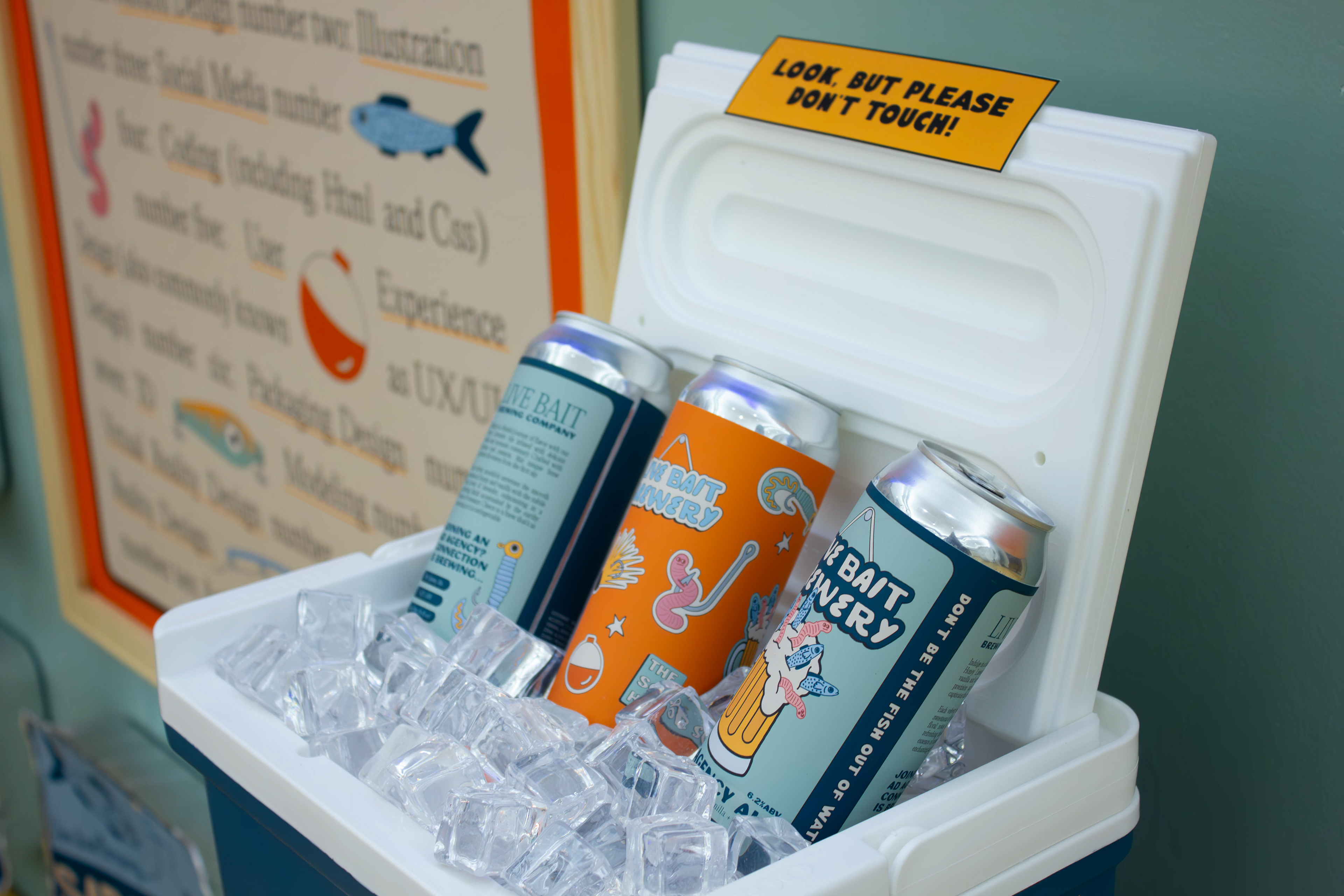
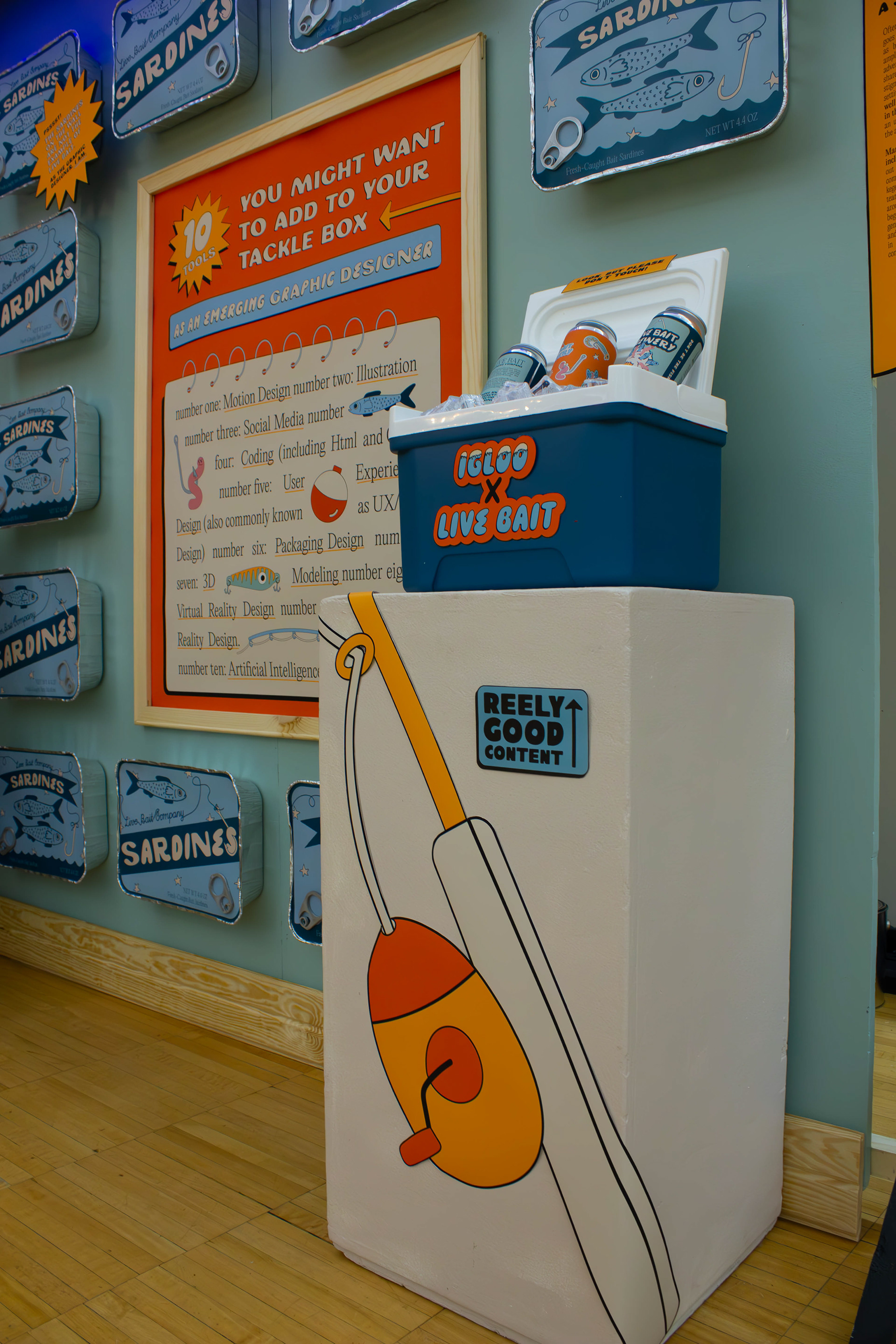
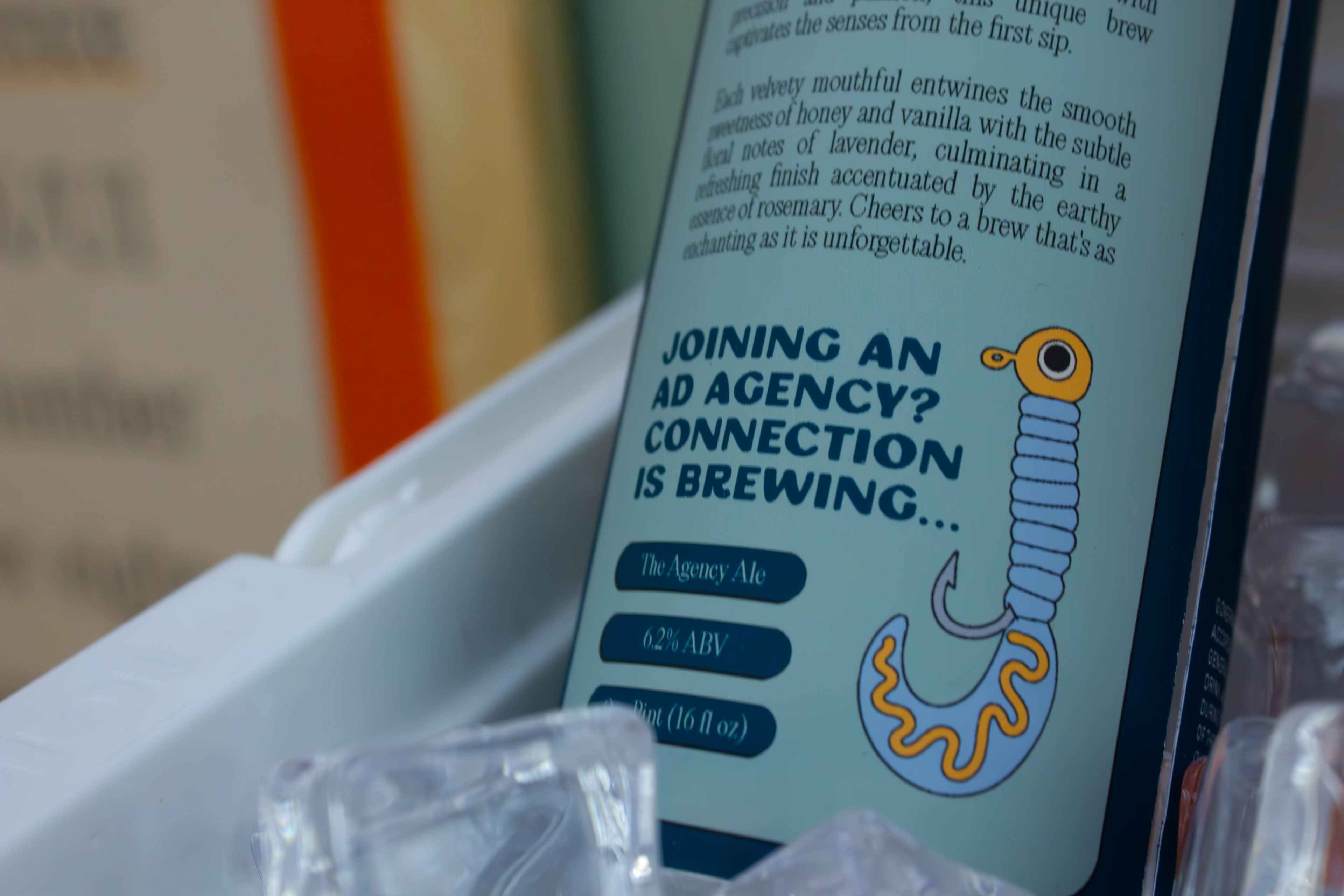
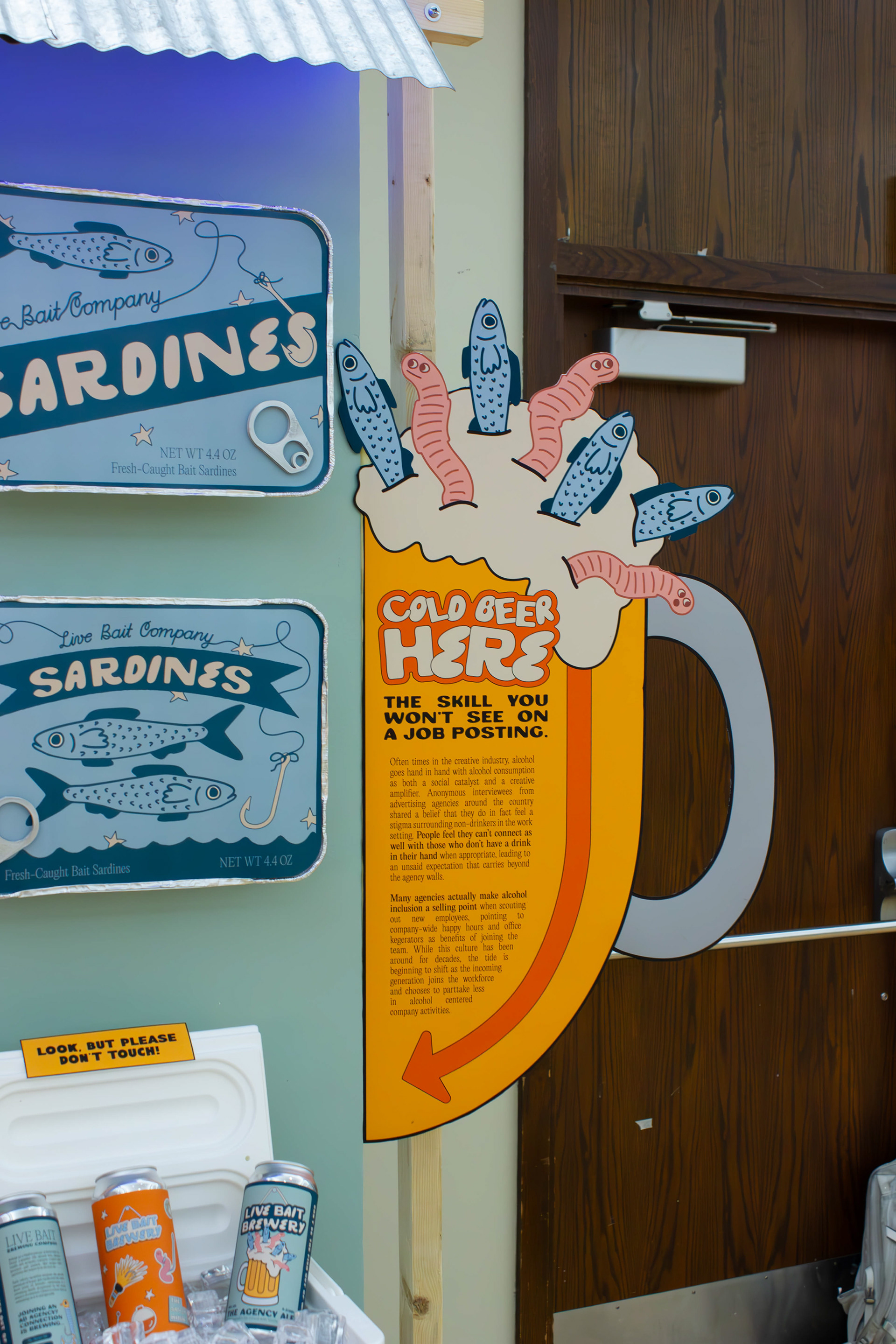

Sardine Wall: Live Bait In Action...right?
While not many folks enjoy chowing down on sardines every day, fish are an entirely different story. This part of the exhibit features one of the most popular bait tactics, dead fish, to play on the concept of live bait, challenging viewers' initial expectations. The sardine tins suggest that the bait is dead, but a closer look reveals that as the graphic designer, I am actually the live bait showcased on the wall. My goal for the visual identity of the sardine tins was to incorporate life into the design to attract attention and encourage engagement with the "product." This mirrors how graphic designers must infuse their work with vibrant energy, whether the product is alive or not. Doing this effectively creates a compelling consumer experience with the product and brand, significantly influencing purchasing decisions.
If you've ever picked a product off the shelf with the most aesthetically appealing packaging, I think you'll know what I'm getting at here.
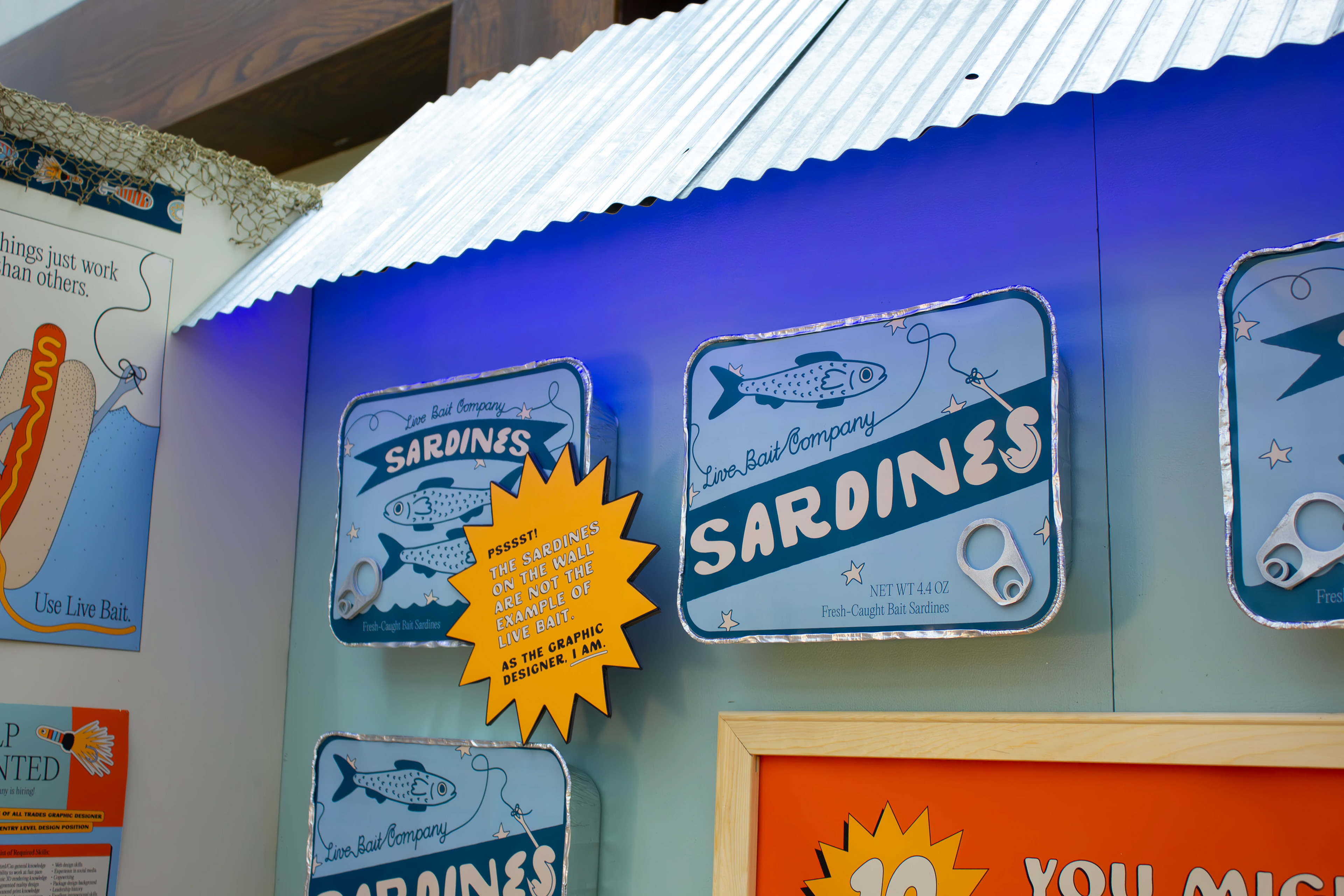


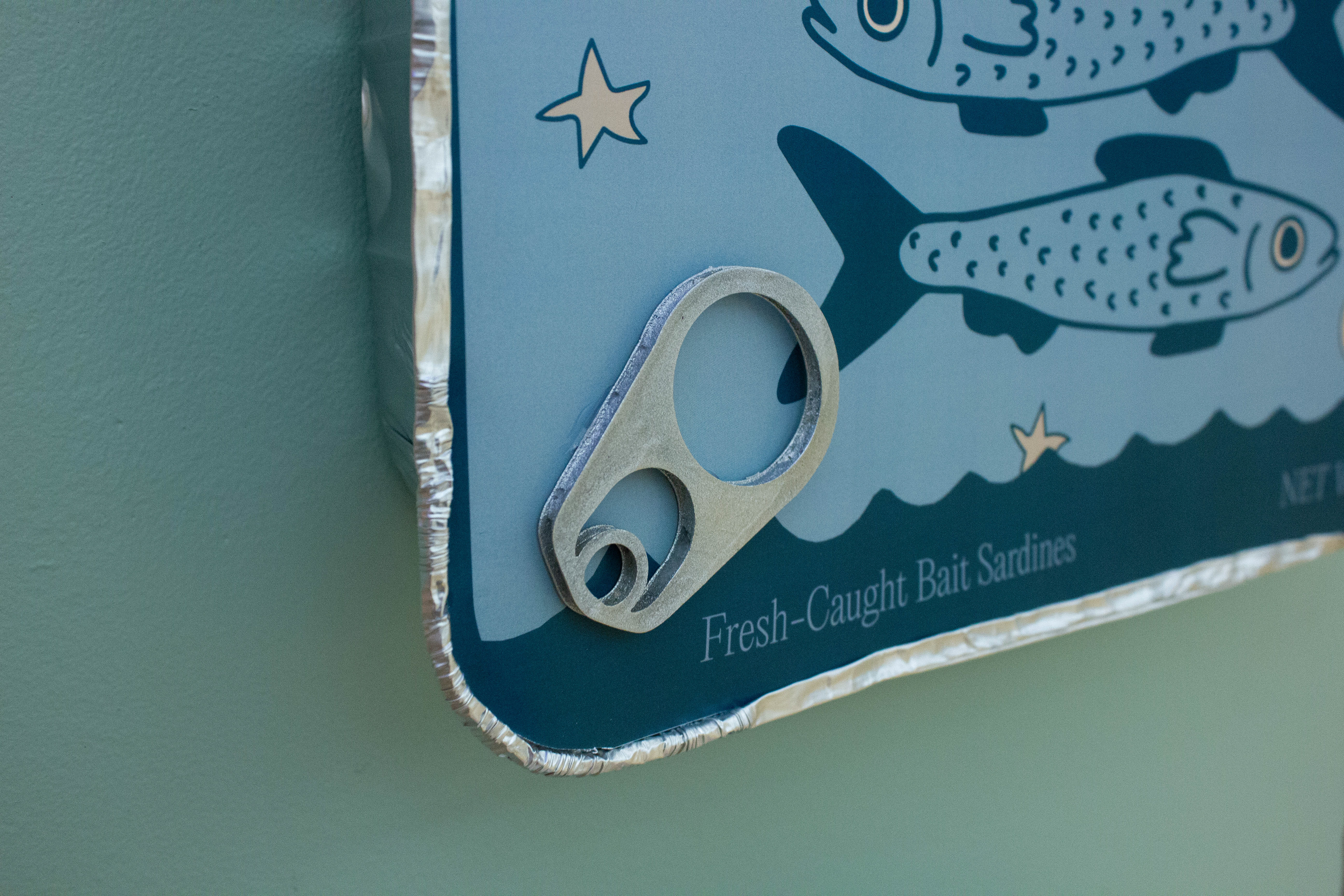
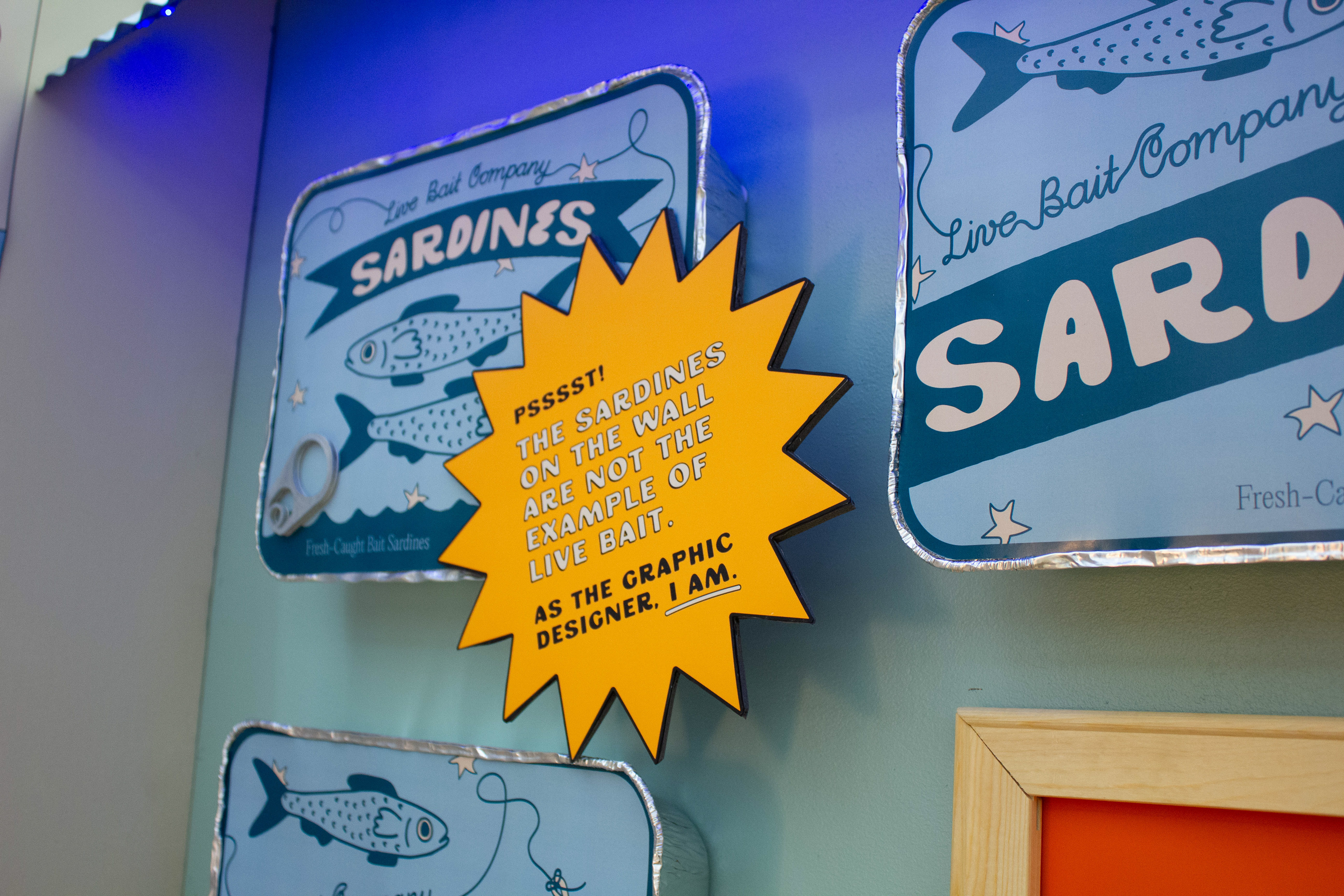
Additional Photos
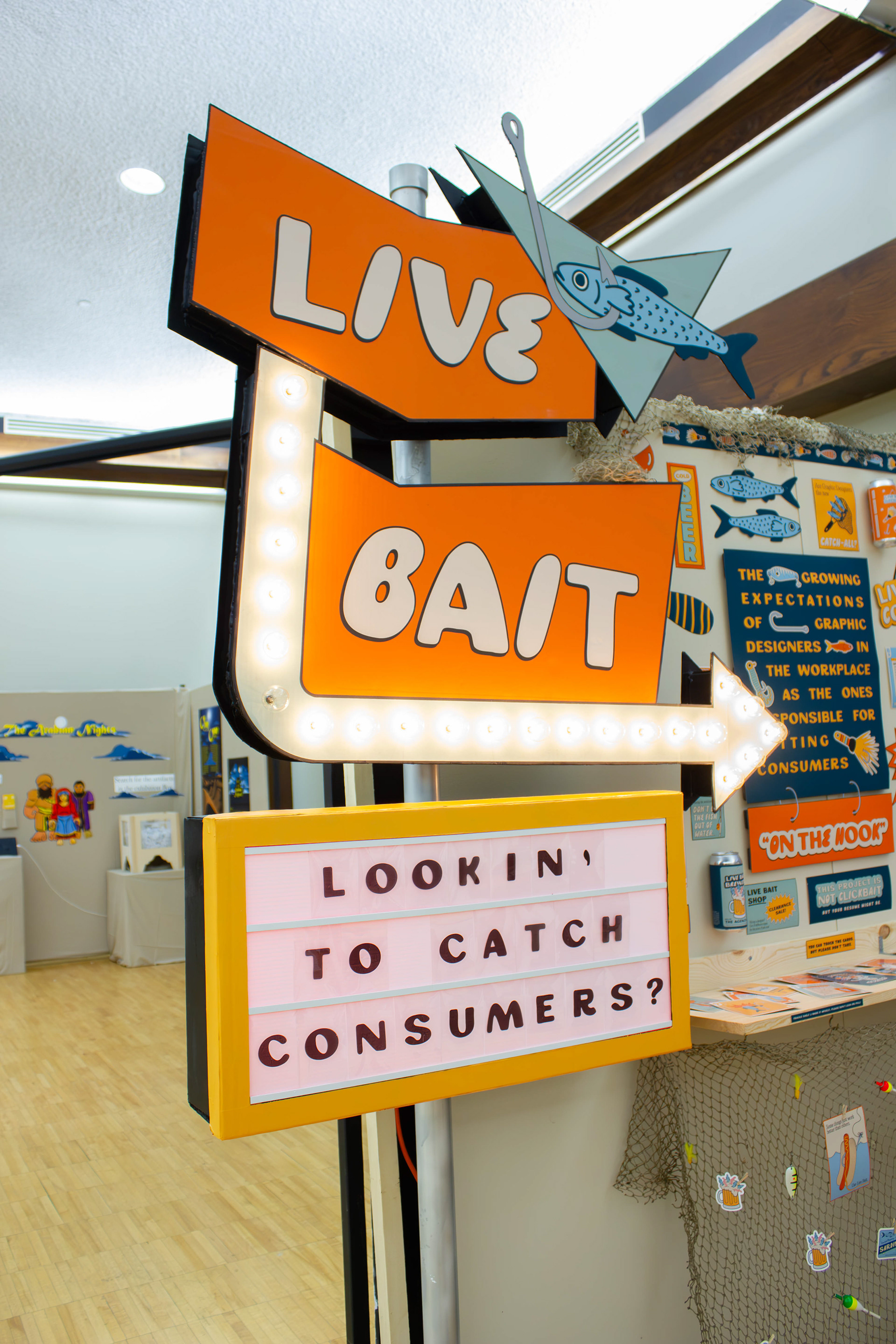
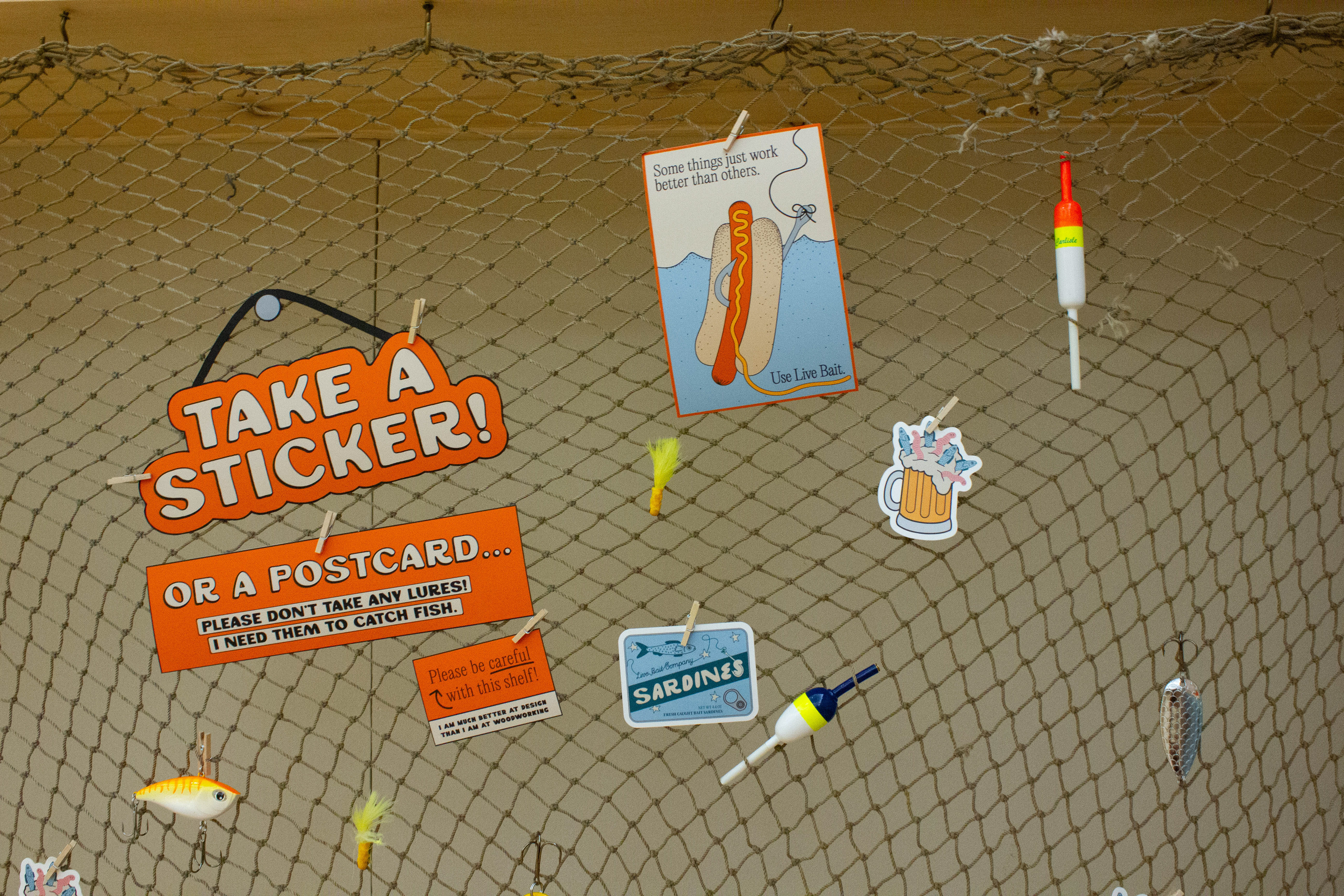
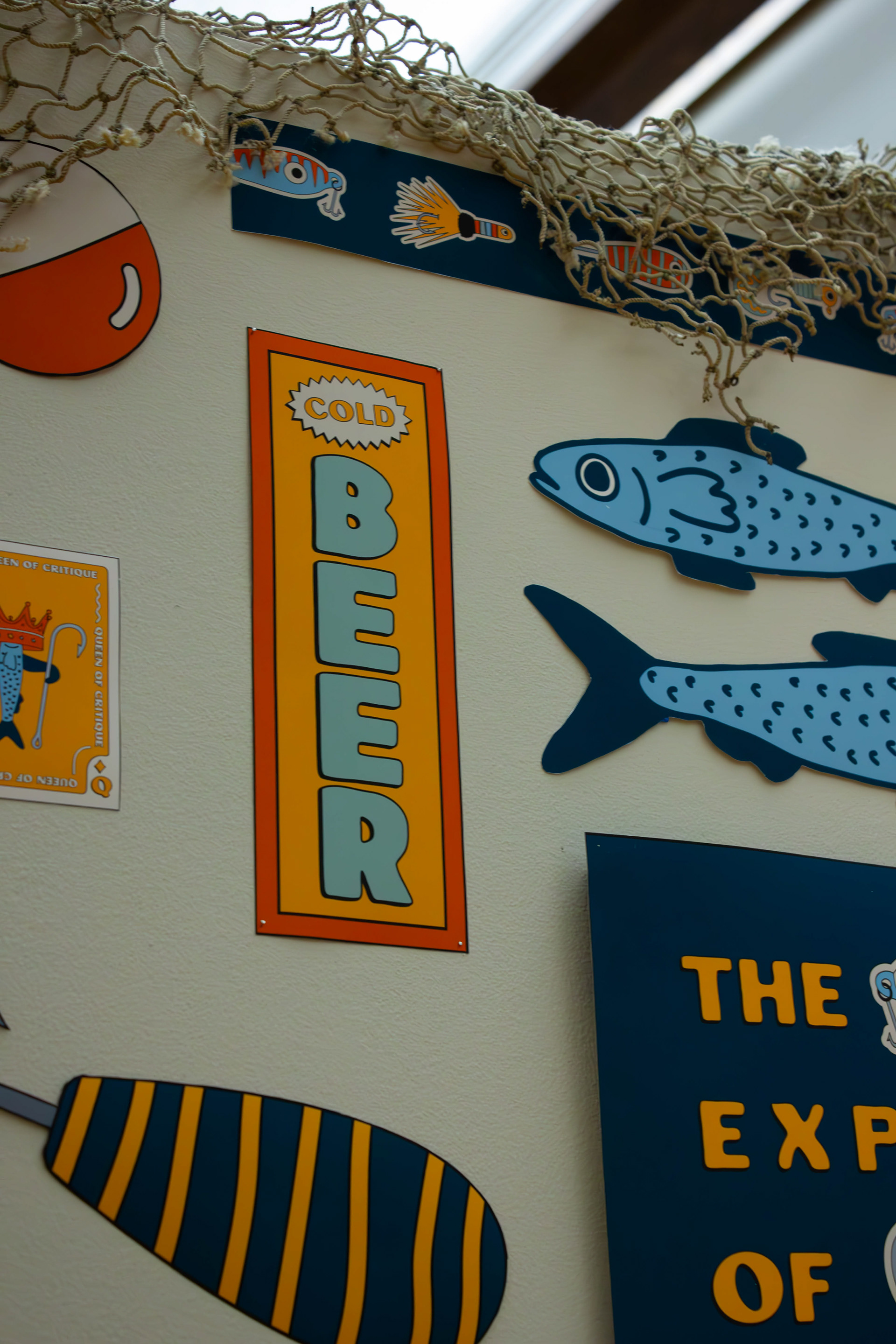

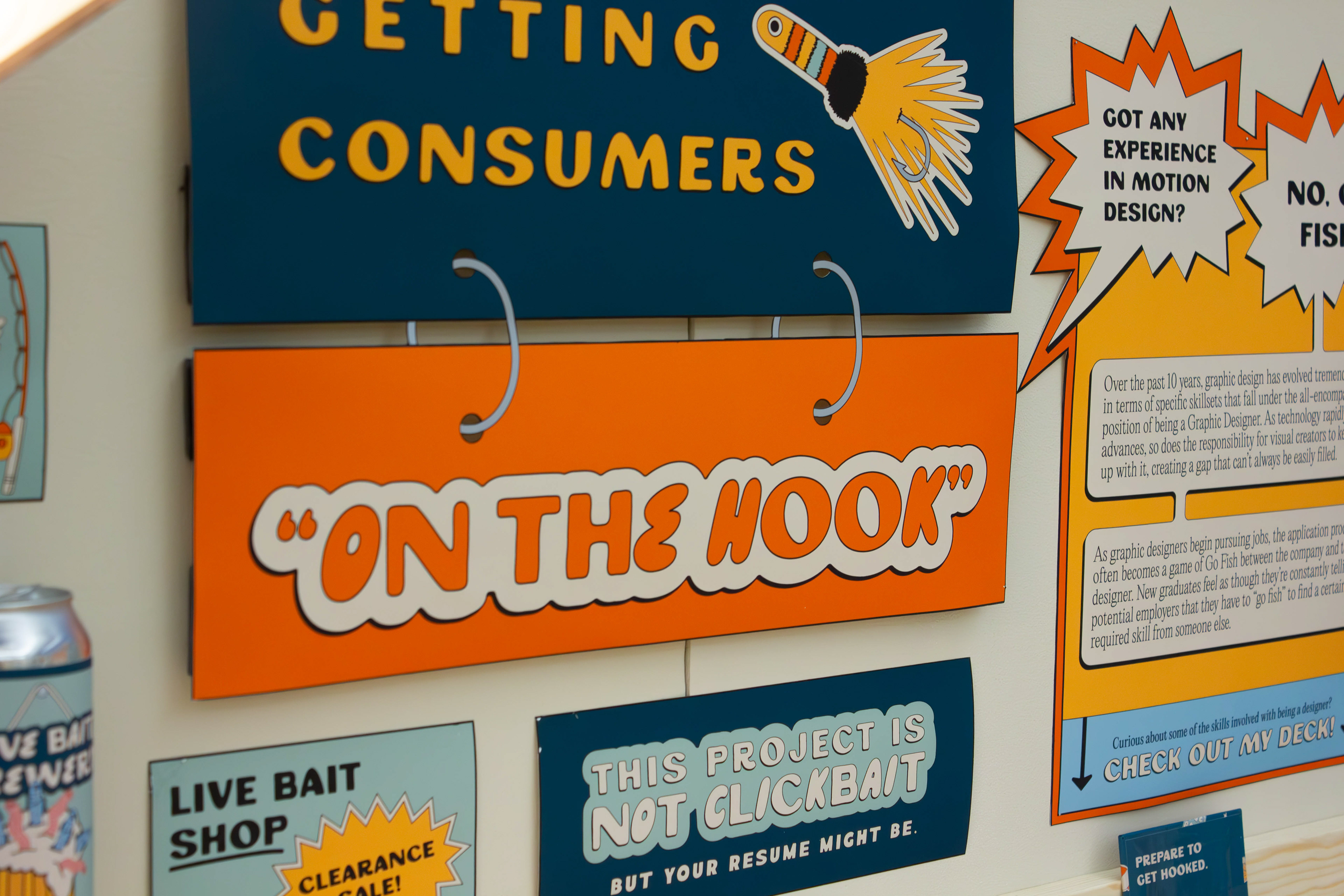
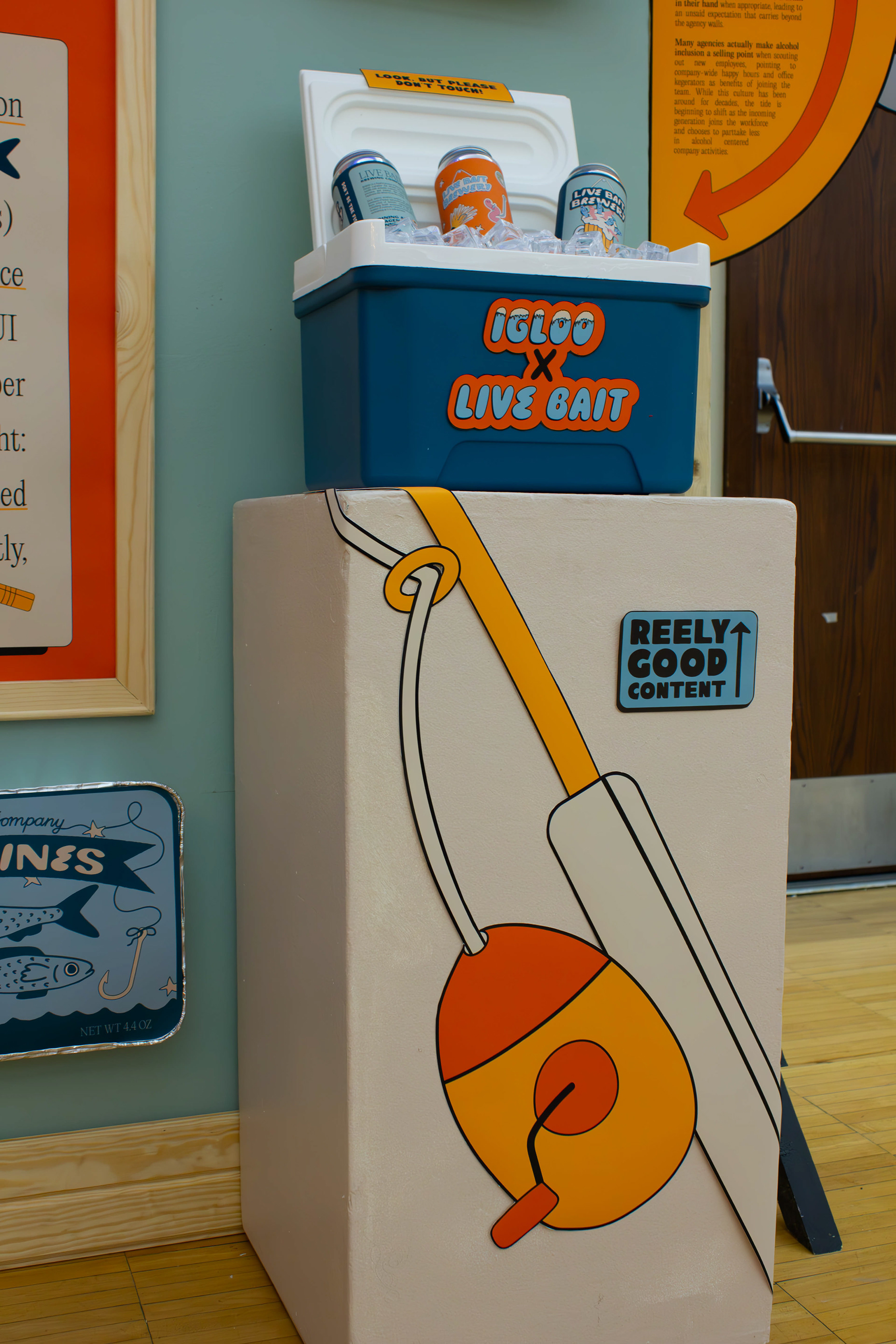

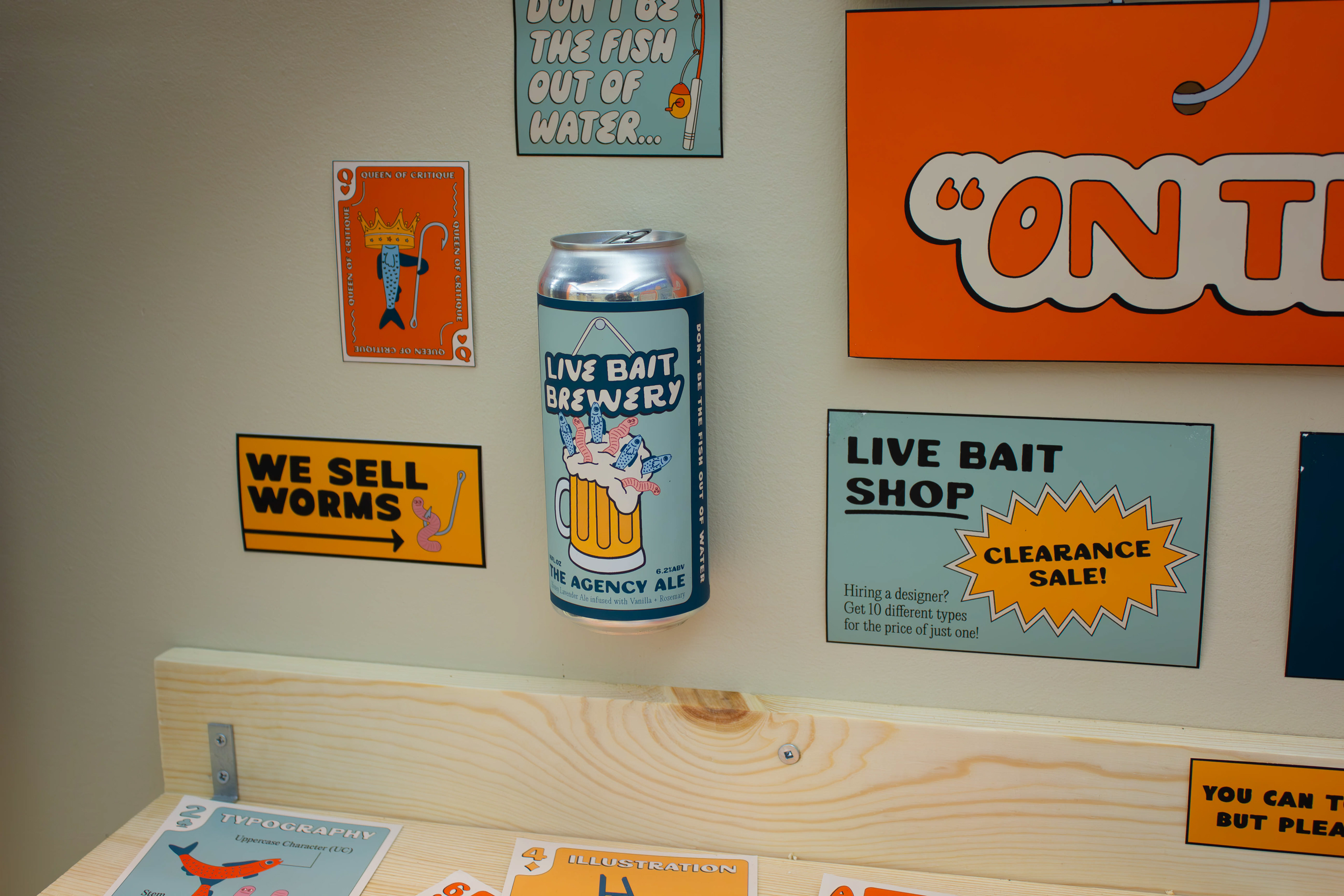
Process Documentation
Have you ever wanted to see a timelapse of someone hand-cutting a hoard of printed graphic assets? You're in luck!
Additional materials utilized in project: cardboard, PVC pipe, vinyl printed material, translucent paper, plywood, coroplast, wooden dowels, foam core, Epson laser cutter.
Hover on photos below for more information.

Print testing for color accuracy
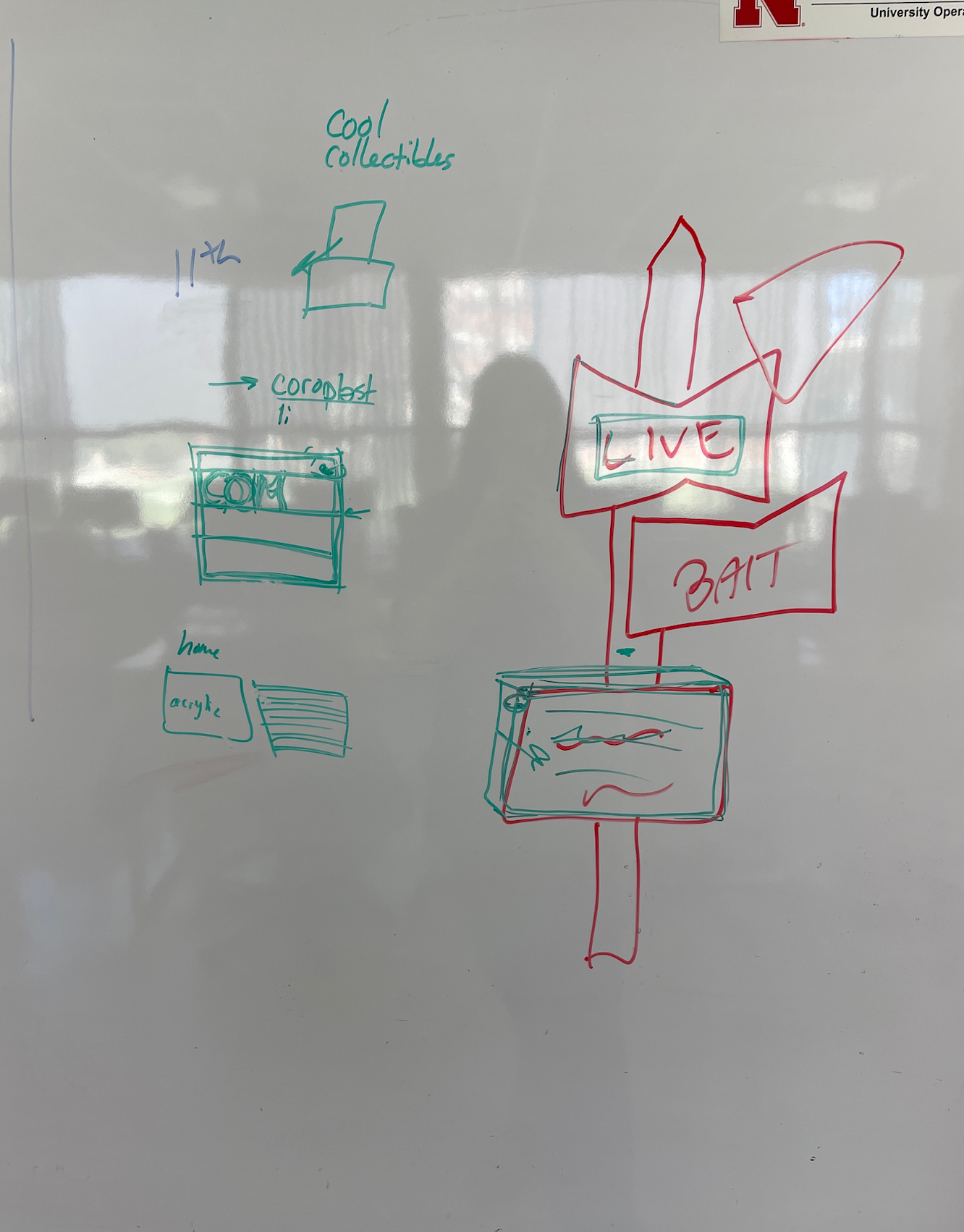
Loose concepts for sign
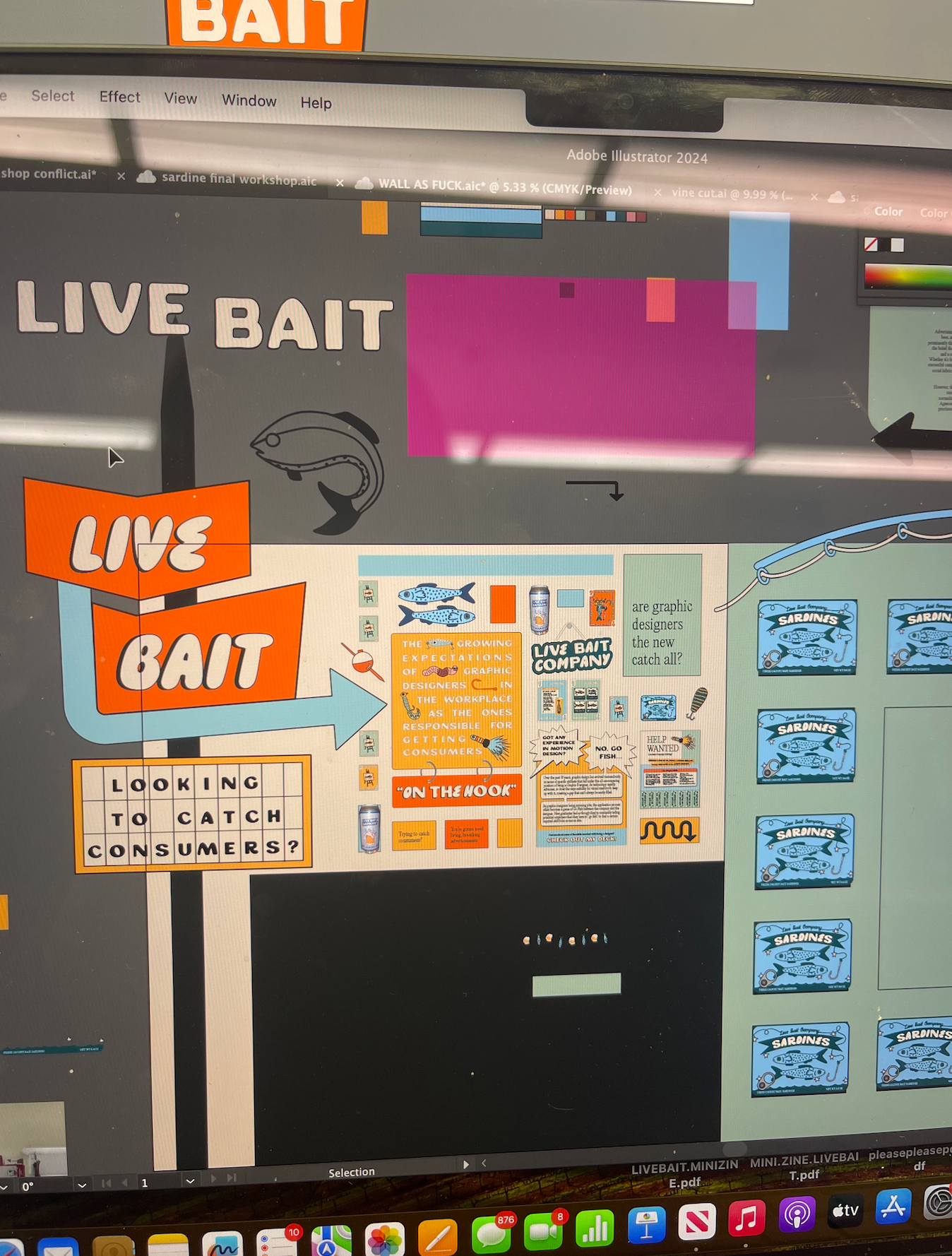
Illustrator 2d draft

Laser cutting pop tabs for sardine tins

Me when Illustrator crashed and I lost 6 hours of progress lol

Drilling holes in the bait sign for lights
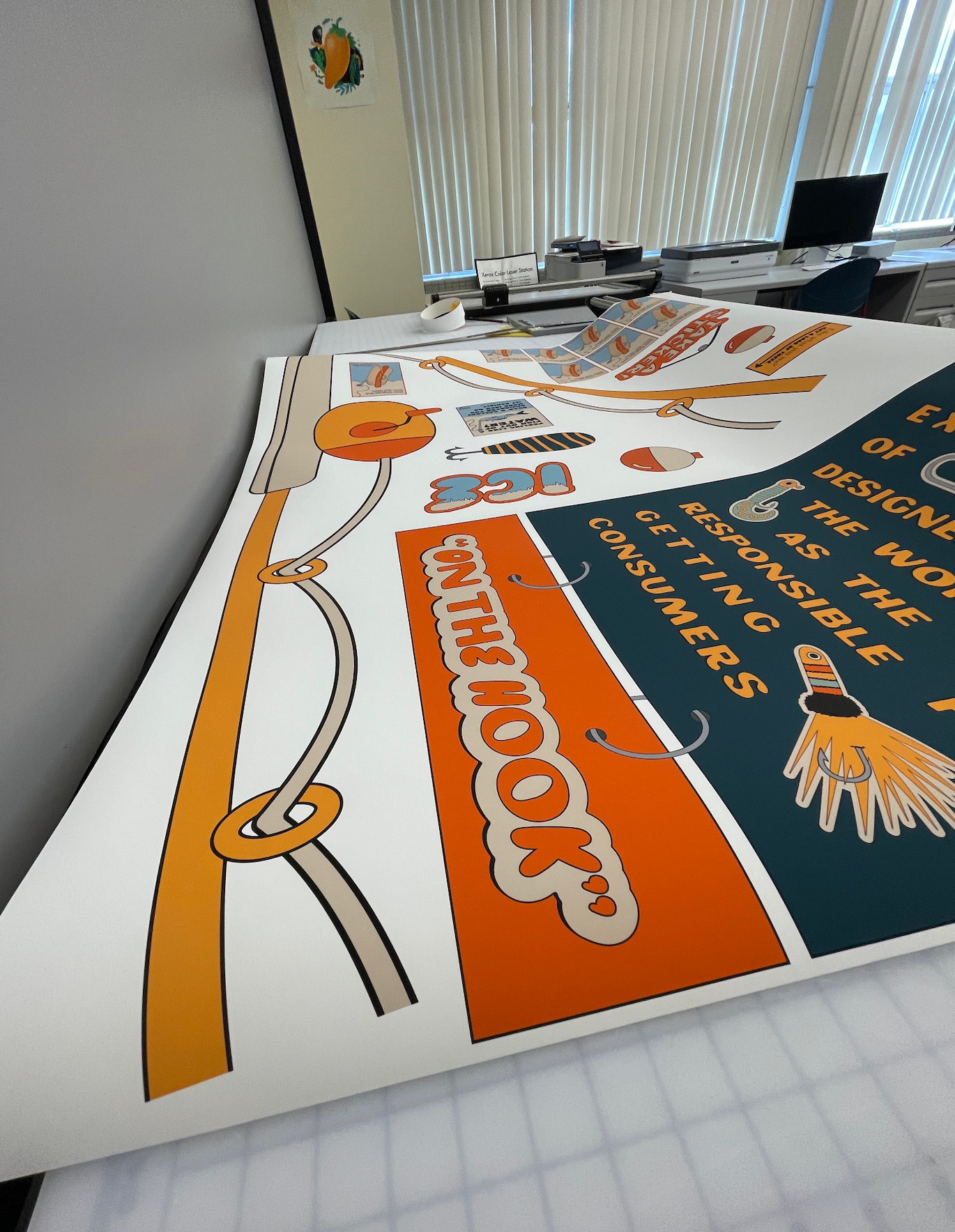
Uncut printed piece to be hand cut
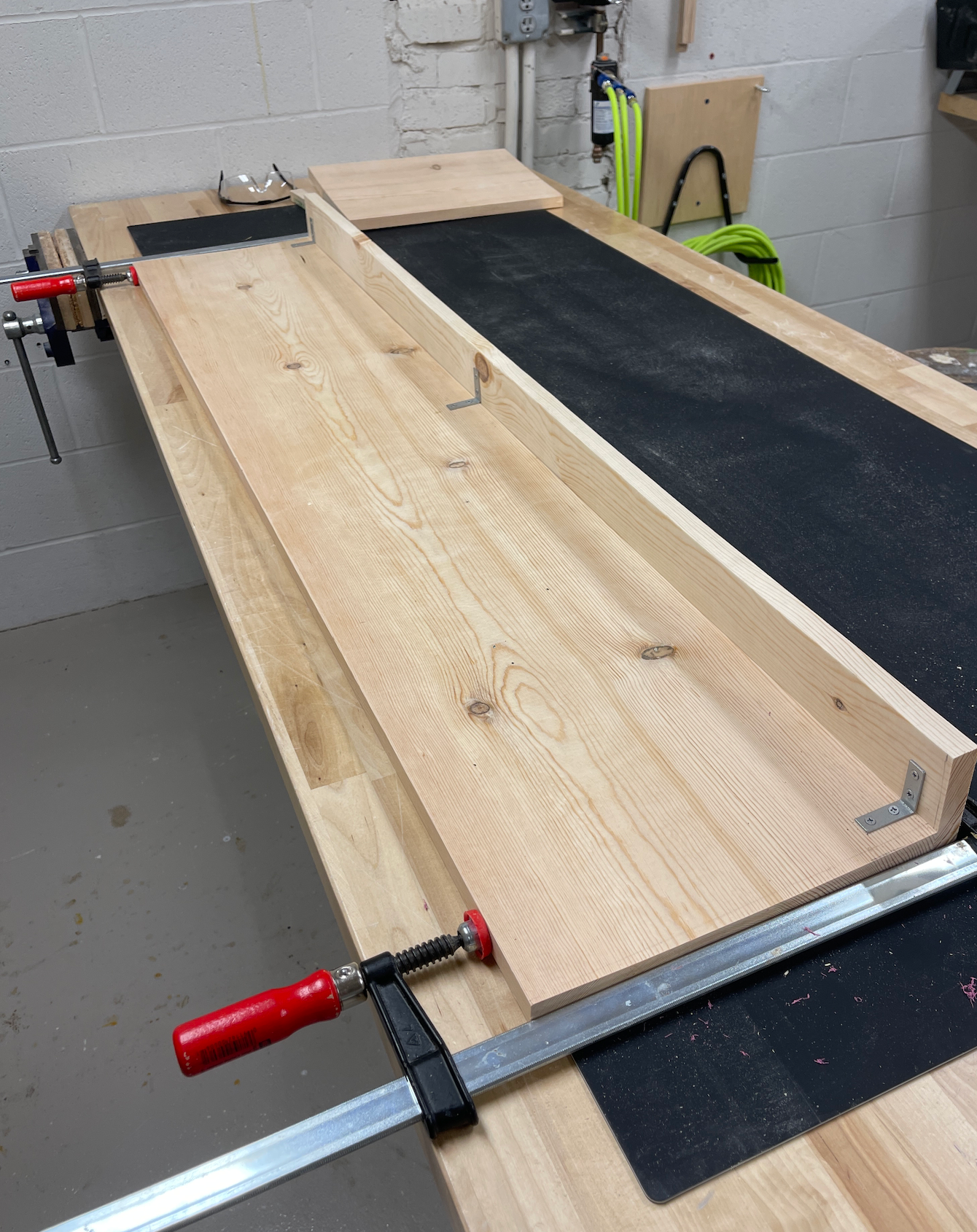
Constructing my shelf!
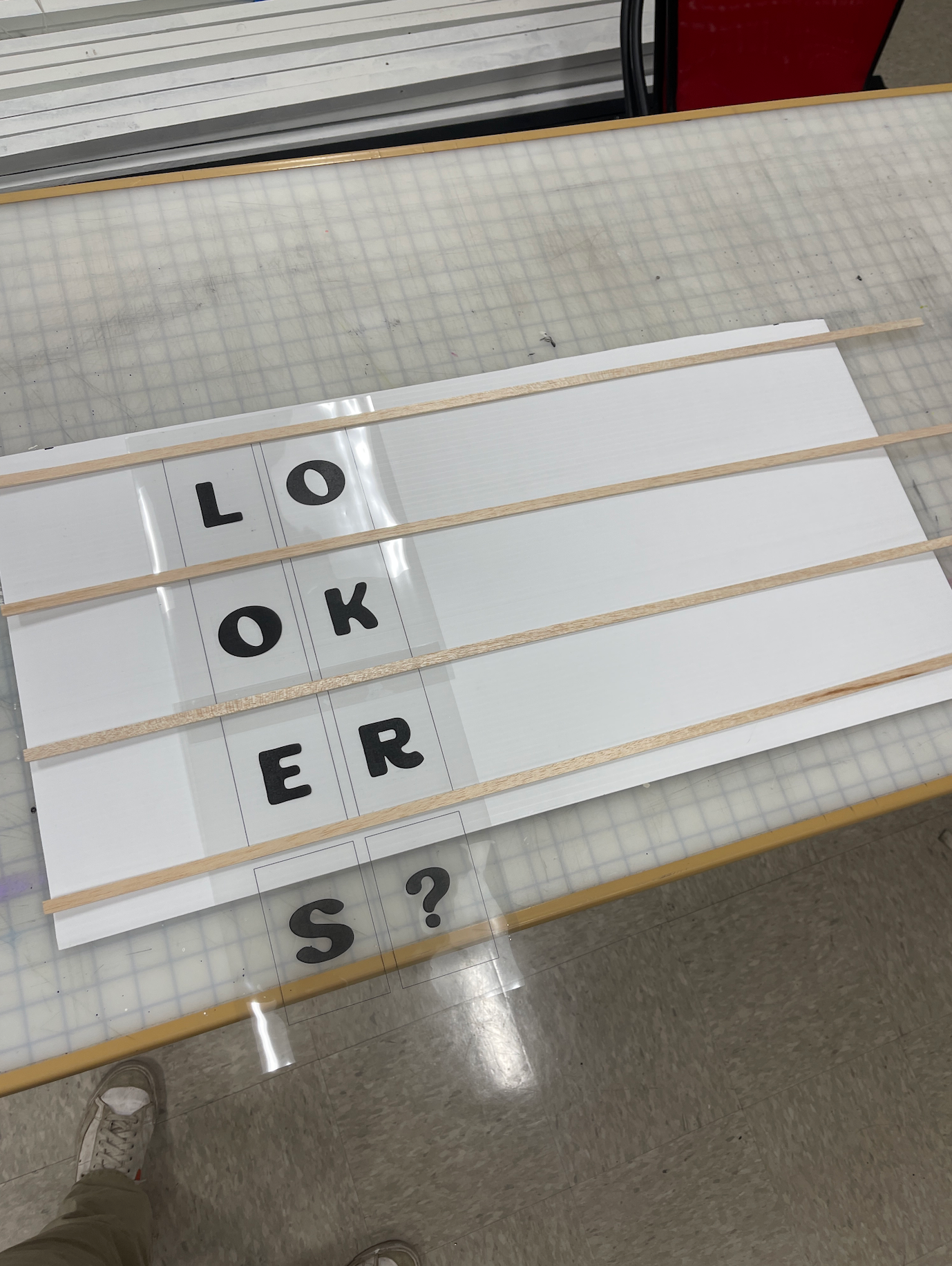
Early in the process of building the lightbox
